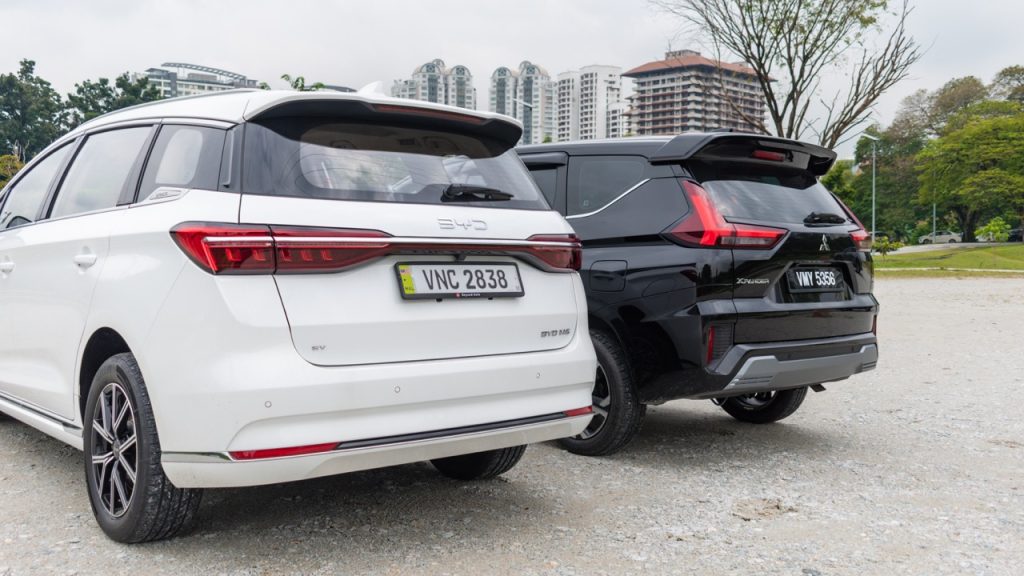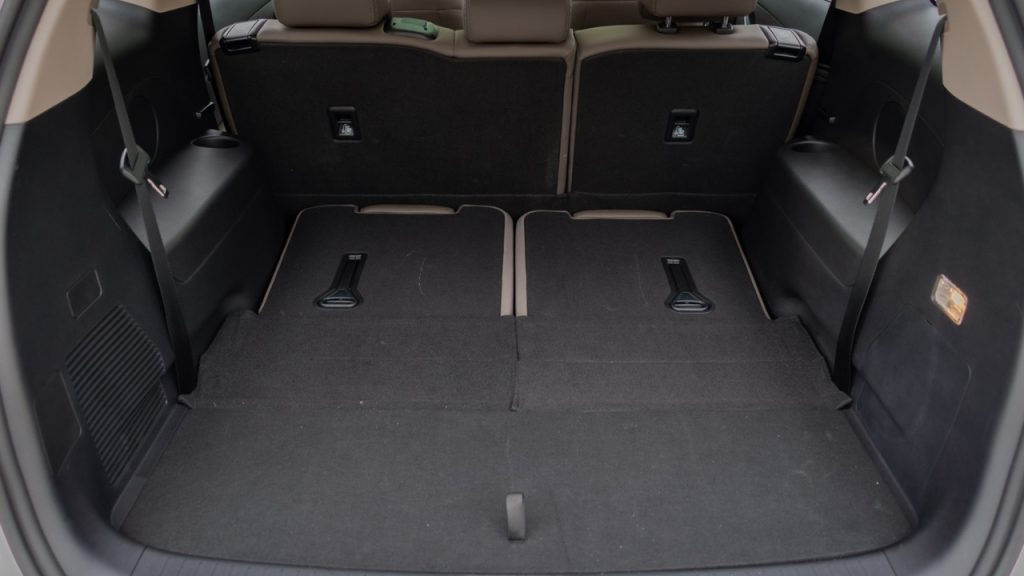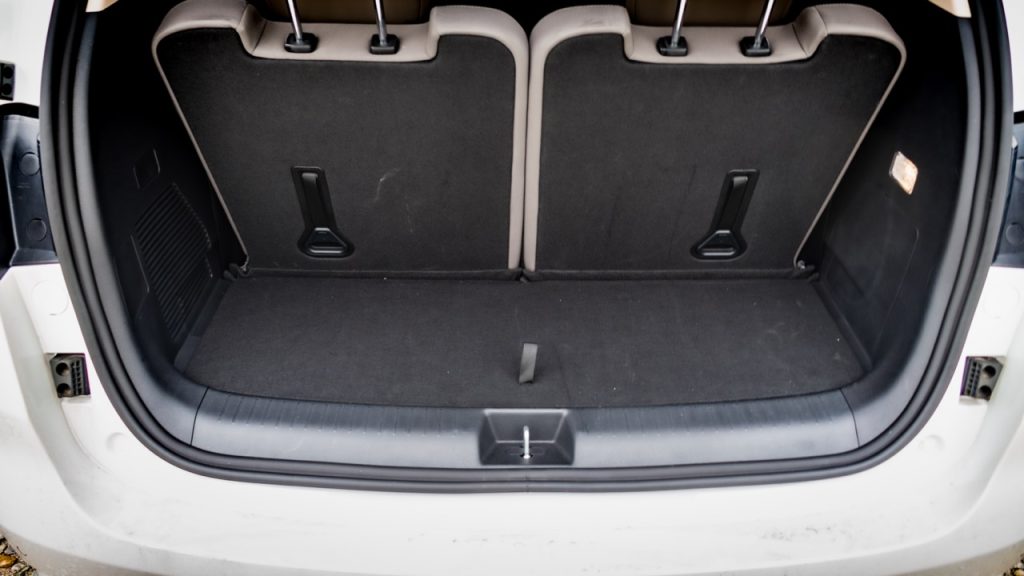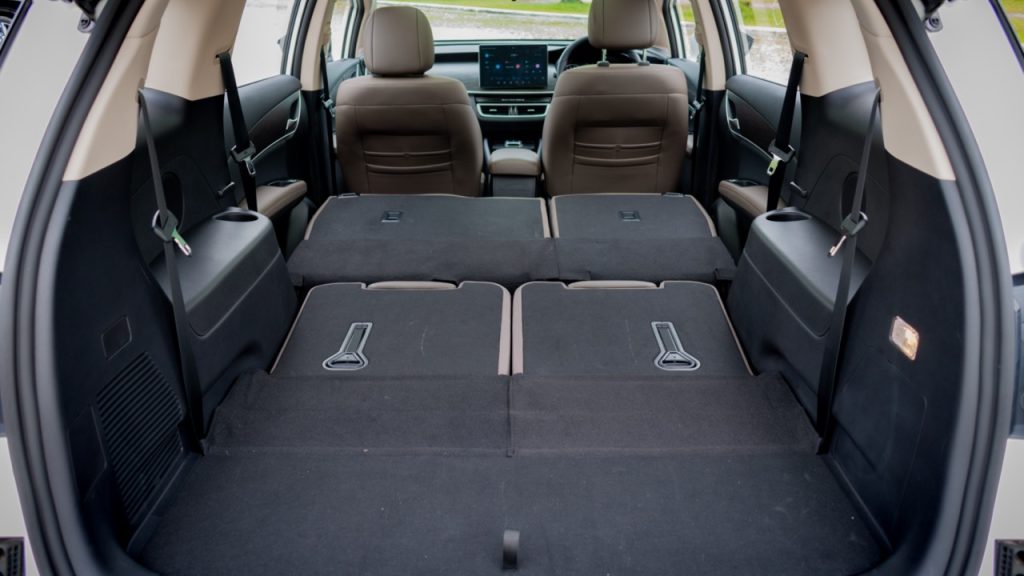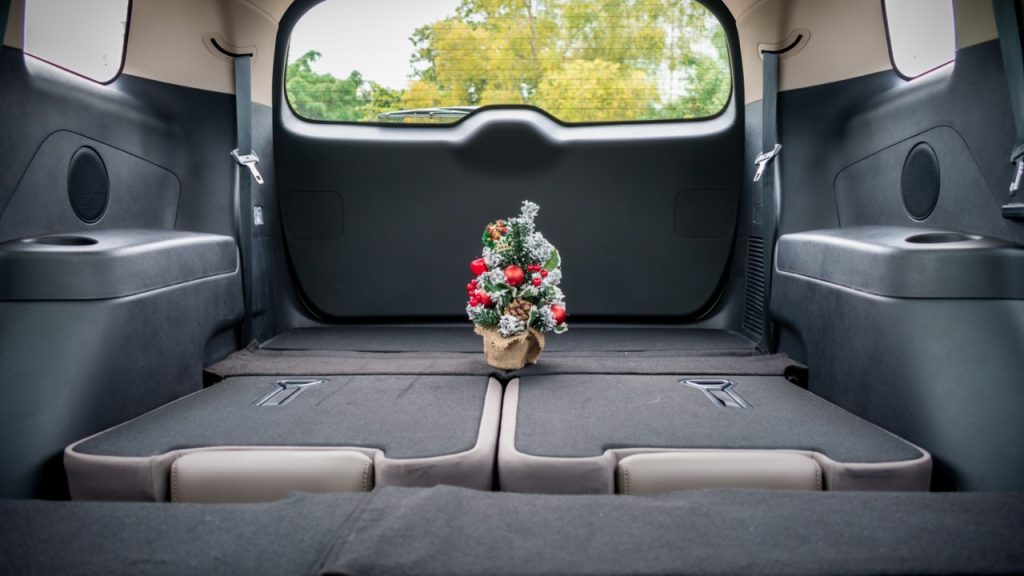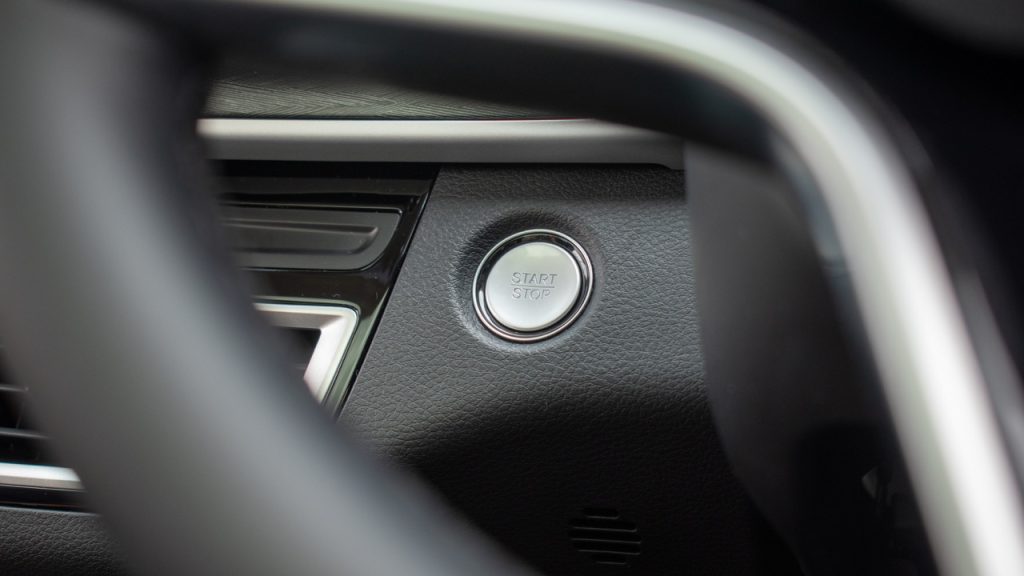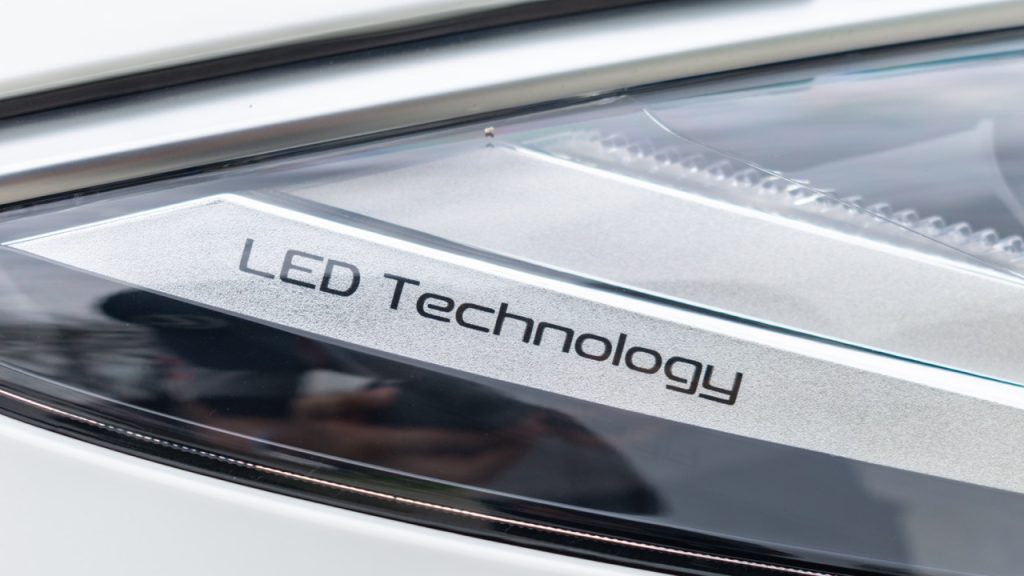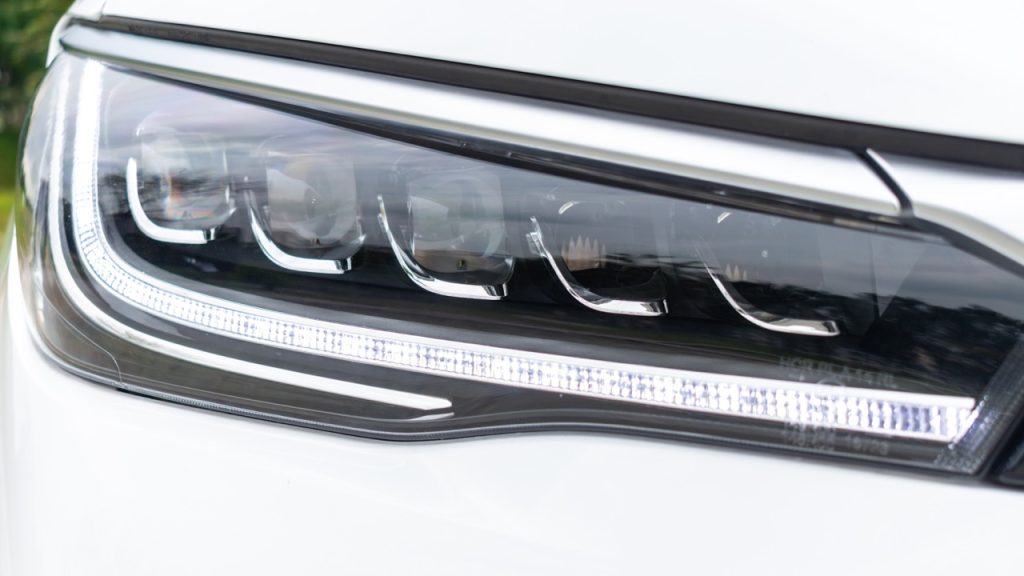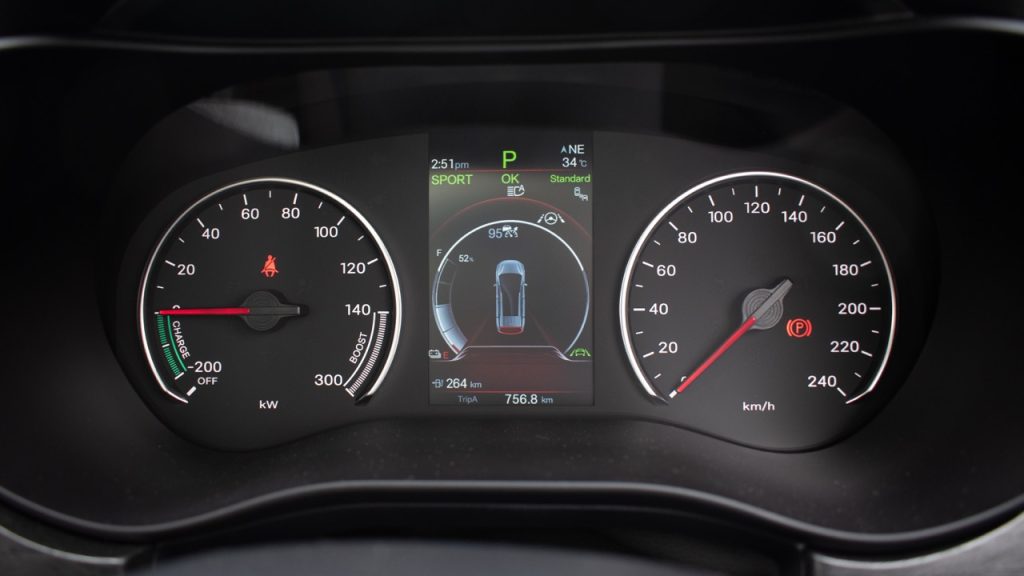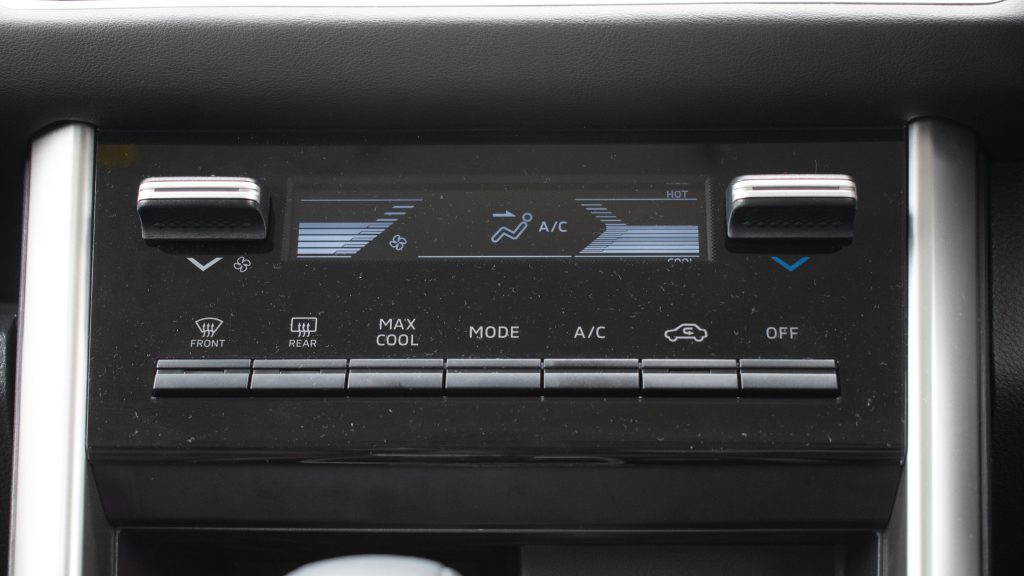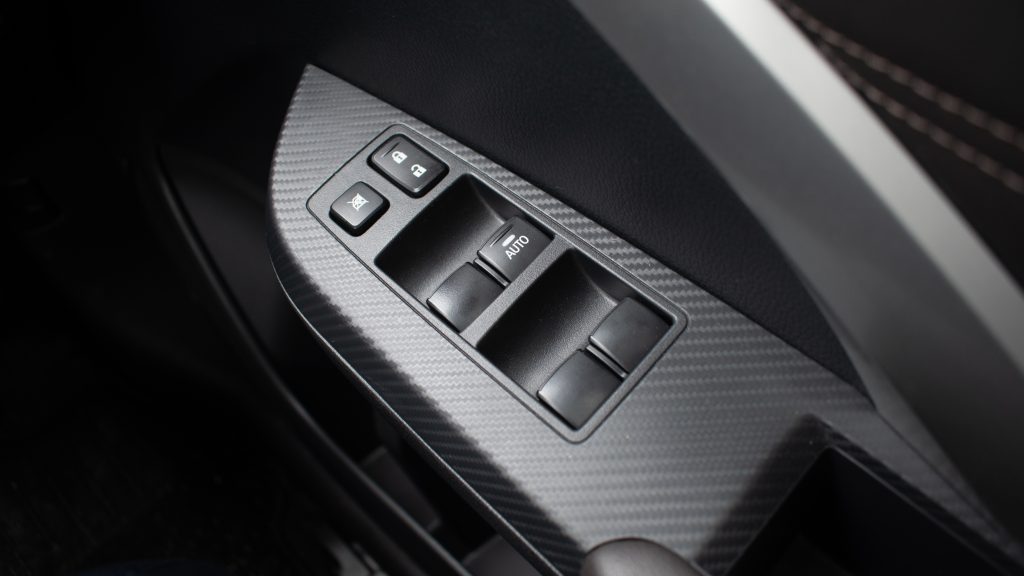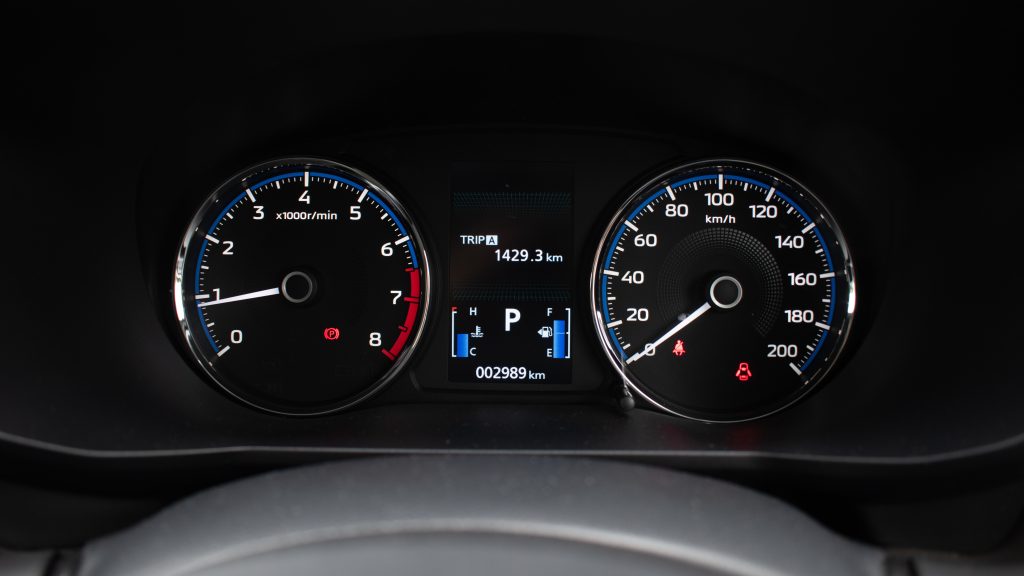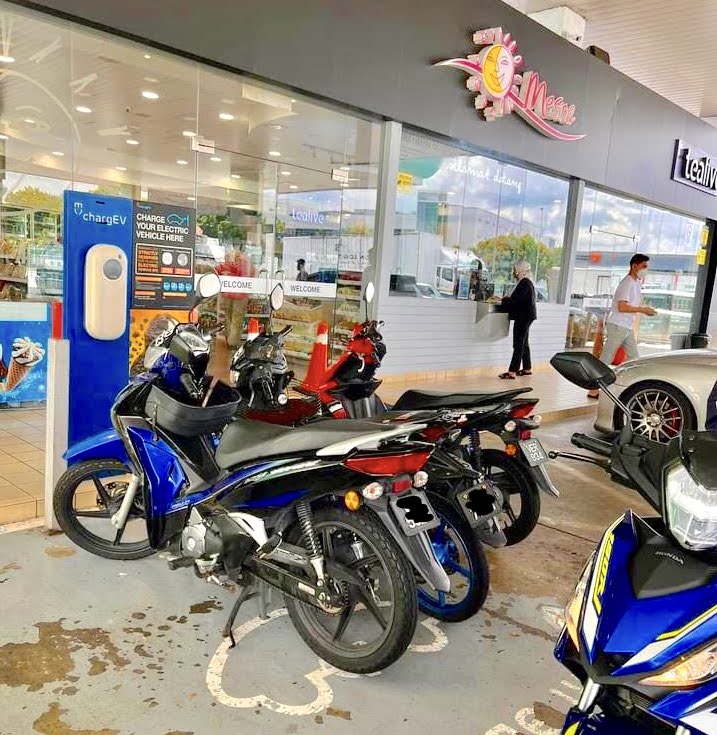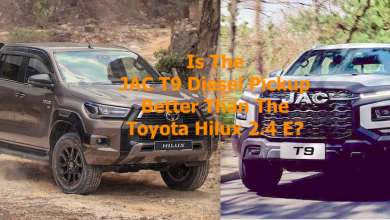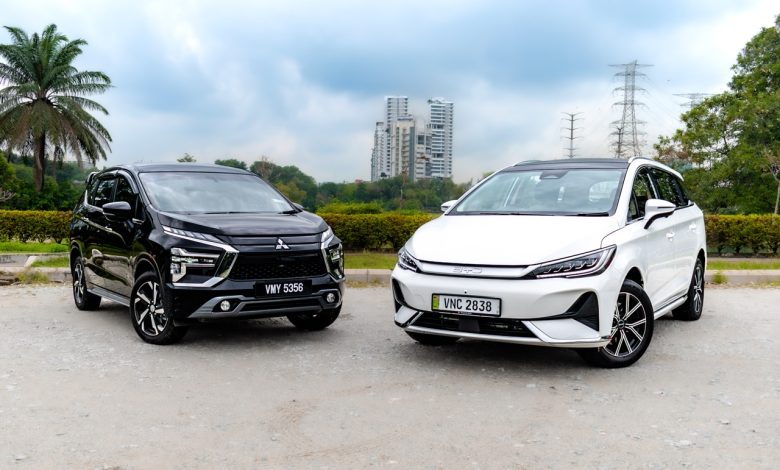
Both cost in the region of RM 110,000, but which is the affordable people mover for you and your family: the ICE Mitsubishi or EV BYD?
Now for those looking to procure an affordable people mover, the Mitsubishi Xpander seems to be the default choice in the segment. This 7-seater from the tri-diamond marque has after all consistently the top-selling non-national MPV since its local debut four years ago, and its recent facelift has just further added to its appeal.
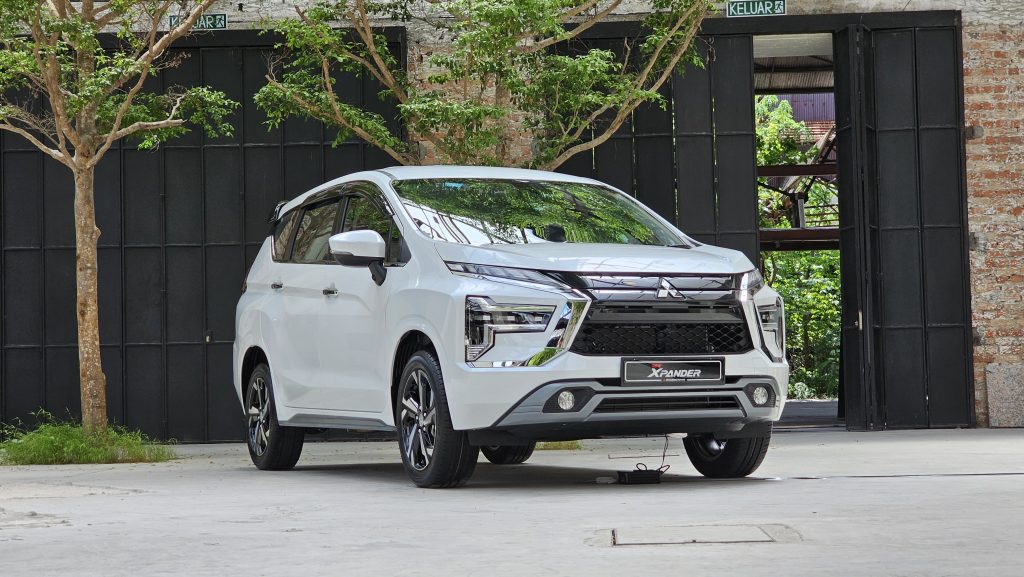
Though for those who are actually in the market for an Xpander right now, the choice to get the Mitsubishi has recently been made much harder by the arrival of the BYD M6. This Chinese people mover lands locally as an all-electric alternative to the tri-diamond purely-petrol Mitsubishi MPV, and the proposition is then made all the more attractive from it coming in at roughly the same price.
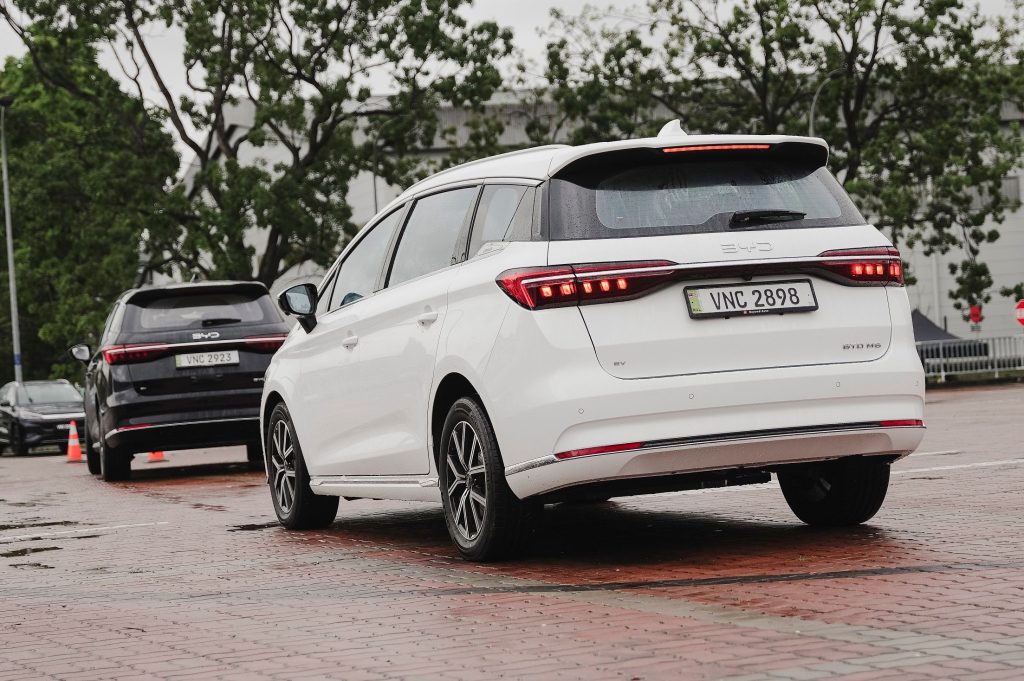
So having incidentally had both the BYD M6 and Mitsubishi Xpander simultaneously in the wider company test roster recently, here is Automacha then attempting to provide a bit more insight on how both cars square up against each other.
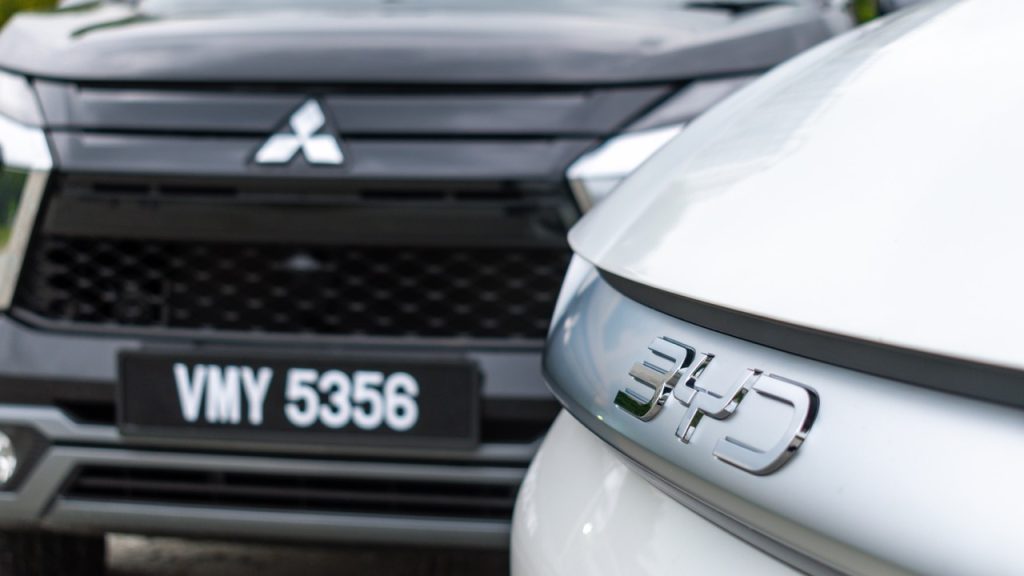
Editor’s Note: For the sake of an apples-to-apples comparison based on price, the following face off will be looking at the Standard spec of BYD M6 against the flagship Xpander Plus. Both of which, as reiterated above, cost in the same RM 110,000 ballpark (Xpander Plus: RM 109,980, M6 Standard: RM 109,800).
The BYD M6 photographed here however is to be the higher-end Extended variant, with the Standard variant to not come with things like a panoramic sunroof.
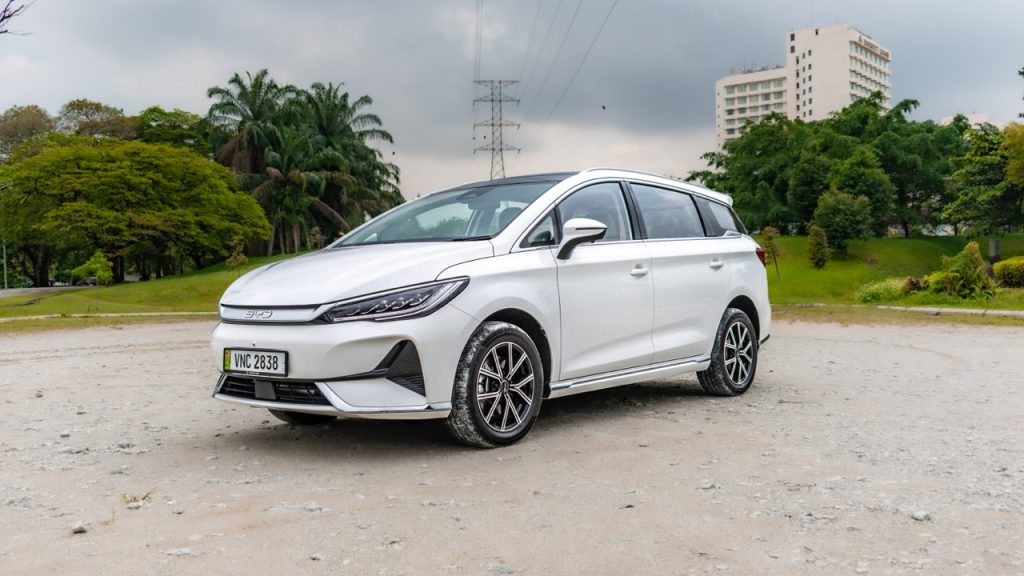
Exterior
The Facts:
Whipping out the tape measure for a bit at the start first, here is just how both cars stack up dimensionally against each other:
| Dimensions | BYD M6 Standard | Mitsubishi Xpander Plus |
| Length (mm) | 4,710 | 4,475 |
| Width (mm) | 1,810 | 1,750 |
| Height (mm) | 1,690 | 1,730 |
| Wheelbase (mm) | 2,800 | 2,775 |
| Ground Clearance (mm) | 140 | 225 |
| Kerb Weight (kg) | 1,800 | 1,275 |
In terms of kit on the outside meanwhile, both the M6 and Xpander come outfitted with LED lights all round (with welcome home lighting) and 17-inch dual-tone alloy wheels. Both MPVs further feature electrically-folding door mirrors and automatic wipers. The Mitsubishi nets chrome exterior door handles, while the BYD gains sequential indicators round its rear.
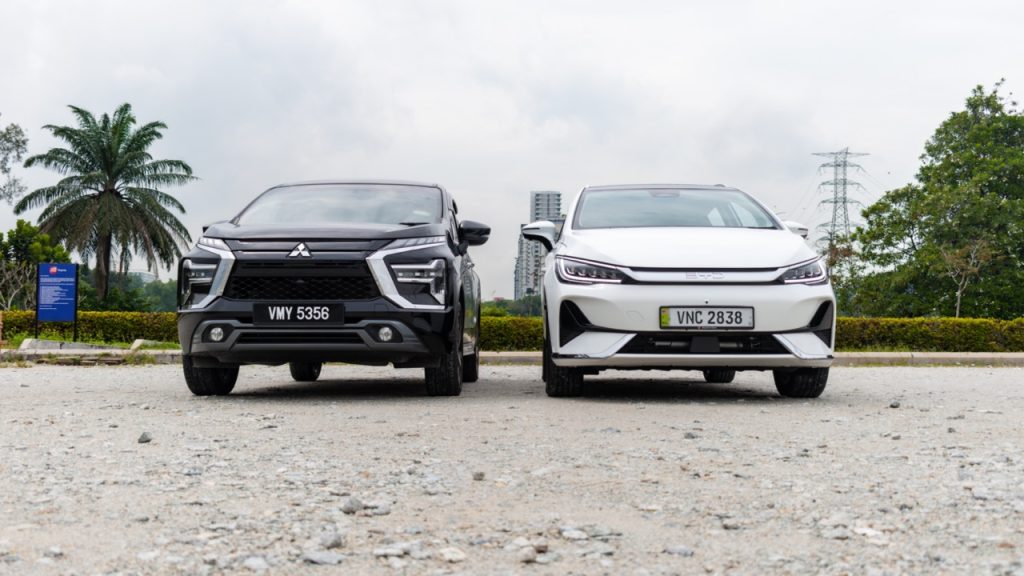
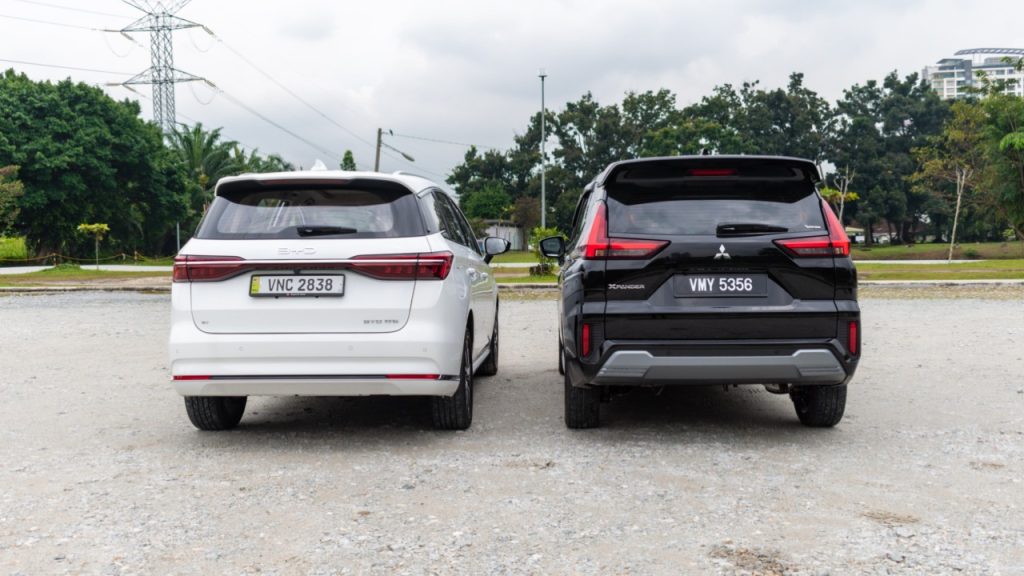
The Automacha Opinion:
Now comparing the exterior aesthetics of both MPVs is pretty much a question of whether one would prefer their people mover to look sleek and curvy, or brash and bold. Though one thing for certain is that courtesy of its raised front end with that Dynamic Shield grille, the butch-looking Xpander is to be the one of the two compared here with a greater on-road presence.
Despite looking like the smaller car in the photos here however however, the figures indicate that the BYD is ever so slightly bigger. And this does pay some dividends to how much space is available within both vehicles, as to be elaborated in the segment immediately below.
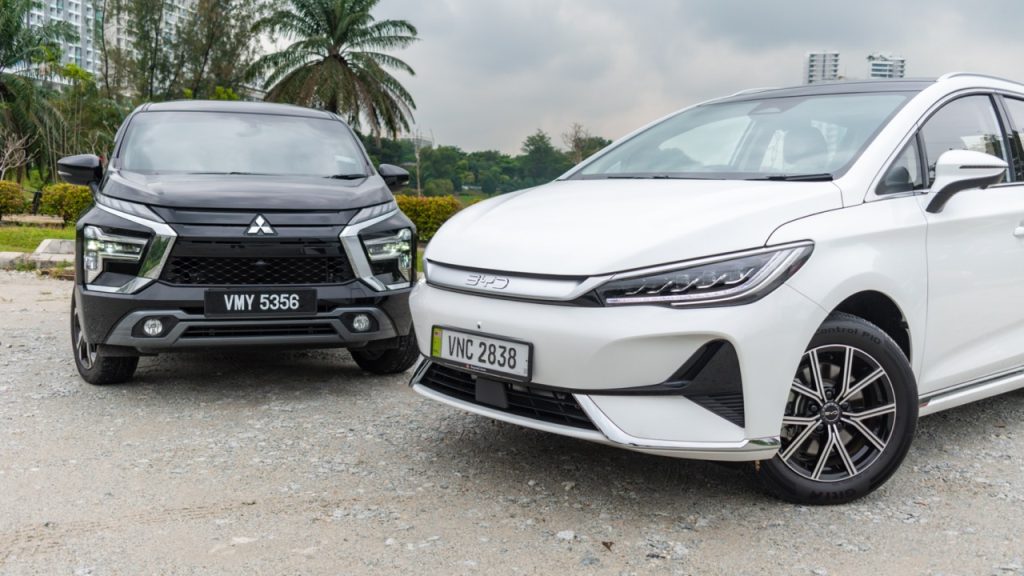
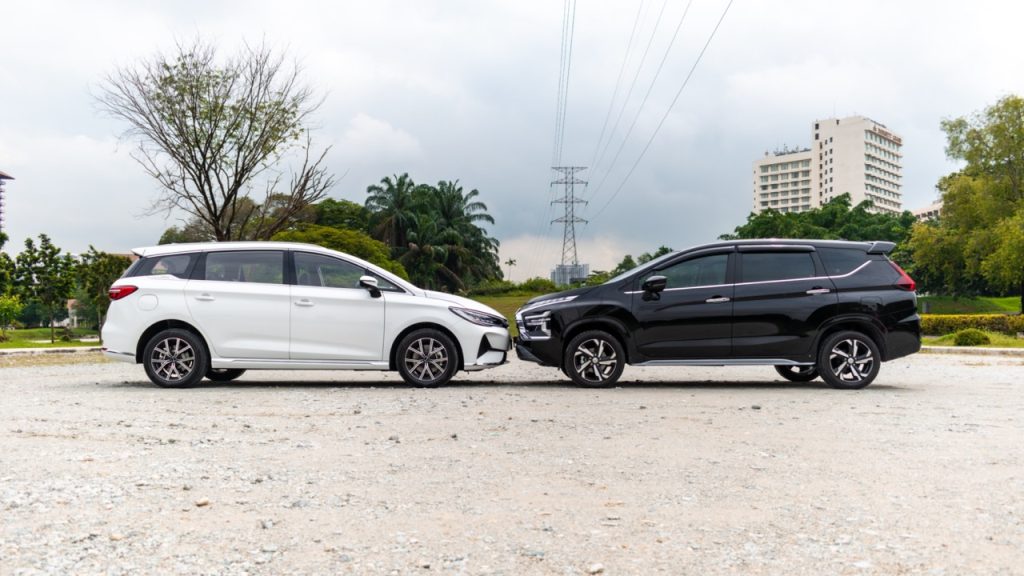
Interior Practicality
The Facts:
Both the BYD and Mitsubishi MPVs come with seating for 7 within, in a 2-3-2 configuration. Both further have a 60:40 split and sliding functionality for the second row, while the third row comes with a 50:50 split.
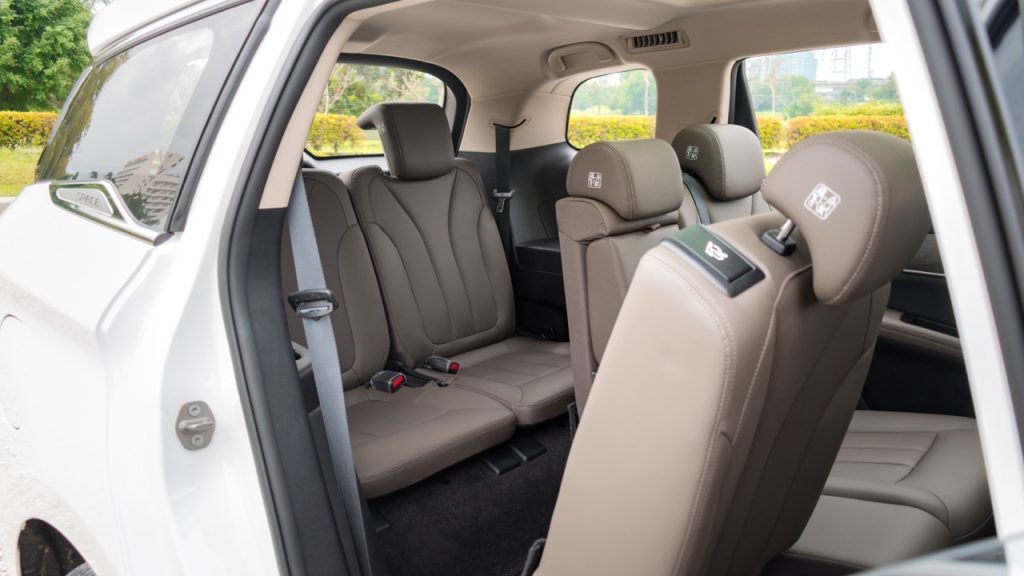
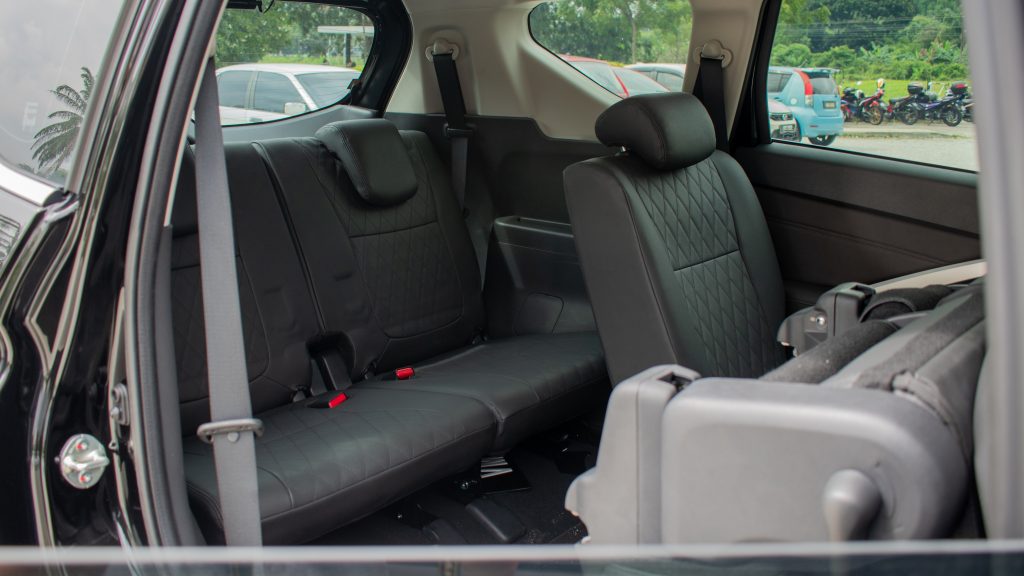
Where the subtle difference lies between both MPVs with regards to seating practicality is for the Xpander to feature a one-touch tumble mechanism that tumbles the second row seats forward to allow for access to the third row, while the BYD instead uses a twin lever setup that tilts the seatback and slides it forward to enable ingress and egress to the rear-most set of seats.
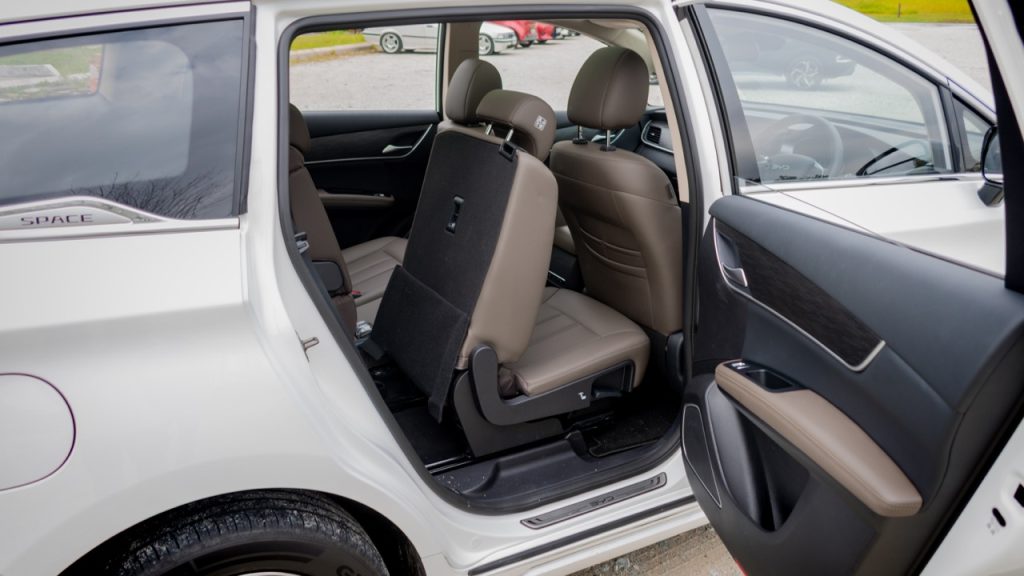
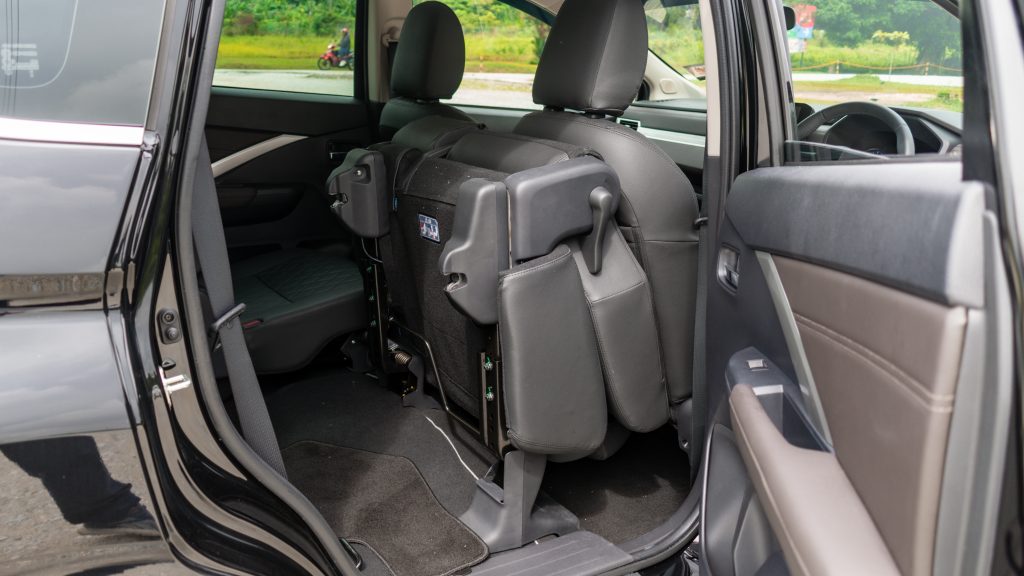
In terms of carrying stuff with this MPVs meanwhile, neither automaker actually lists the full set of volumes for all its seating configurations. Mitsubishi only quotes that the Xpander can hold 495 litres with its third row down, which incidentally is less than the 580 litres the larger M6 can swallow when its last set of chairs are down. BYD also actually lists that the M6 can carry 180 litres when all seats are fully up.
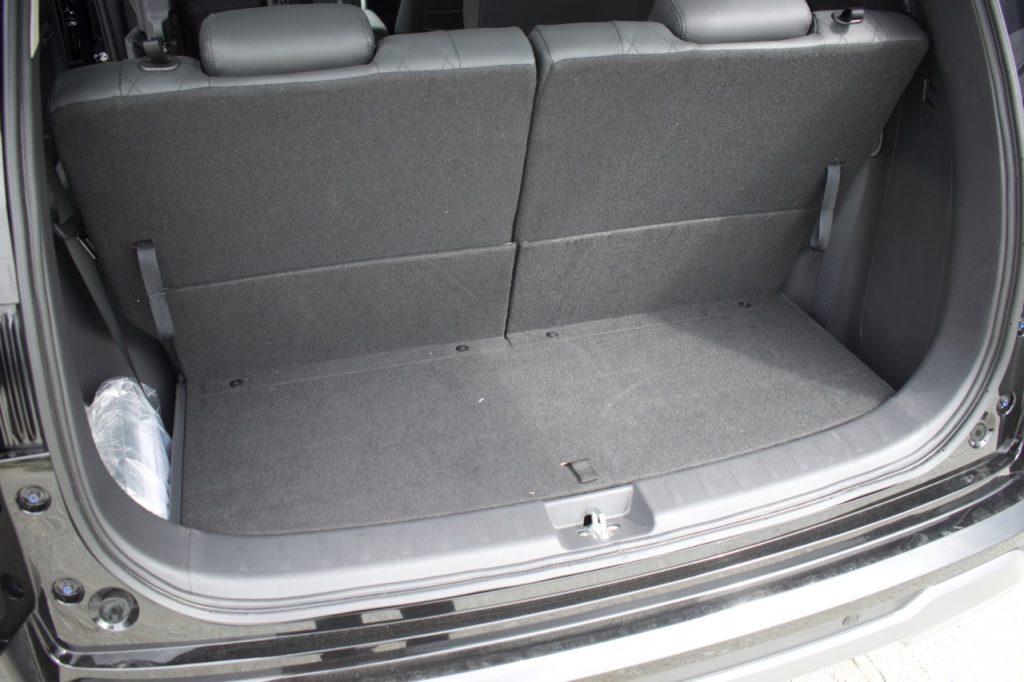
Both the M6 and Xpander feature a flat load floor when the third row is folded down. Both also come with underfloor storage in the boot, as well as multiple pockets on the backs of the front seats. The Mitsubishi however does further net an under-seat tray beneath the front passenger seat, as well as a handy shelf right above the glove compartment up front.
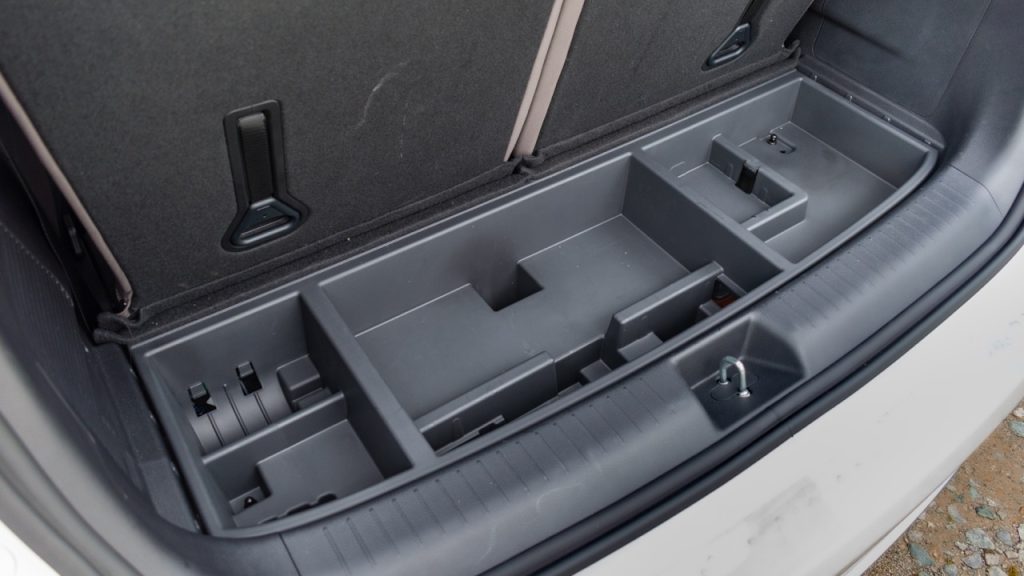
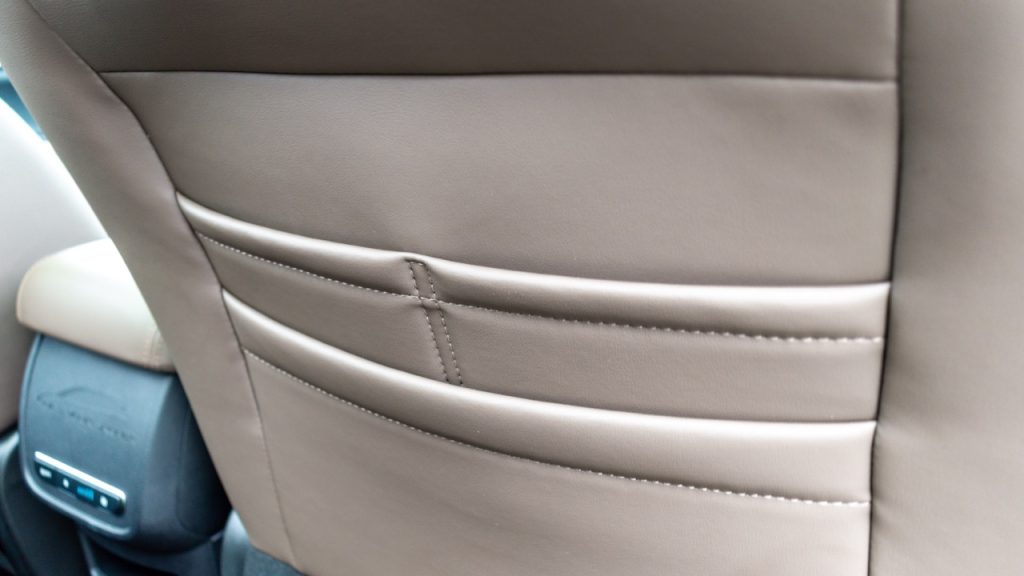
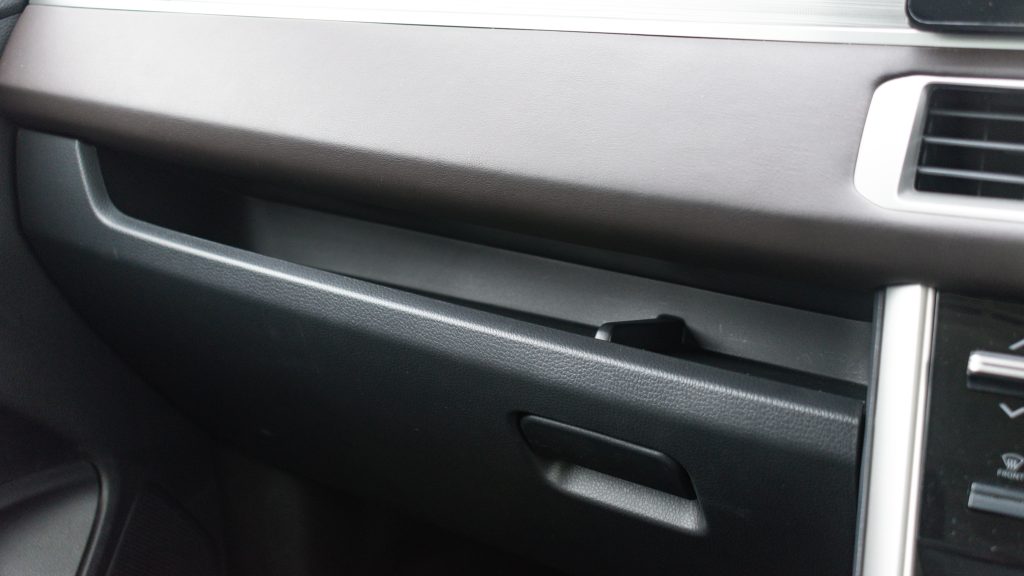
The Automacha Opinion:
Now expectedly for the slightly larger MPV of the two, the M6 does feel ever so slightly a bit bigger than the Xpander inside. This is particularly true for those seated at the rear-most row, with the BYD offering marginally more head and knee room to those banished behind. Both cars are to nevertheless not be used for carrying basketball players behind for long periods of time, with 7-seaters that are a size (and price) segment above these two here being more suited to that job.
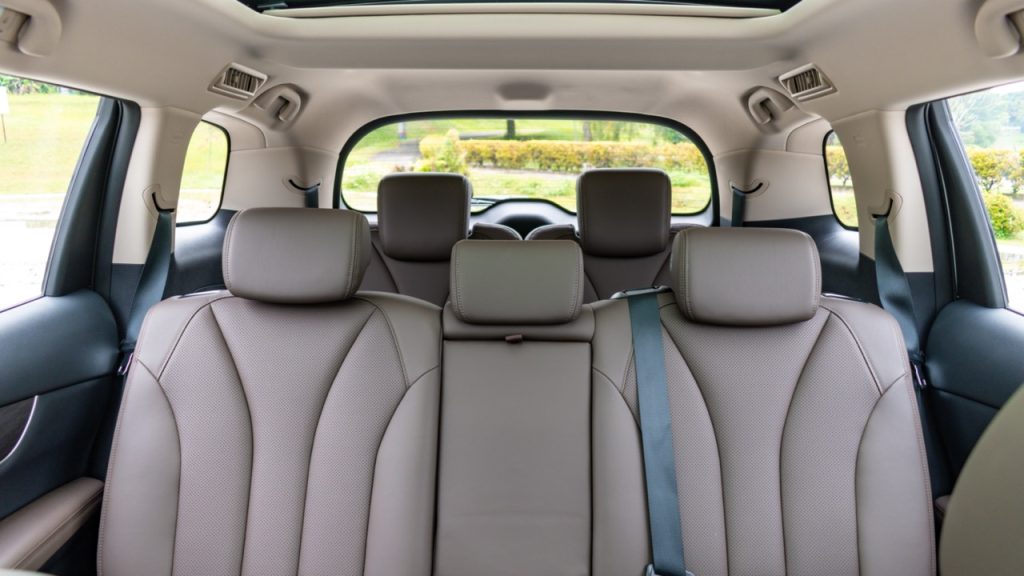
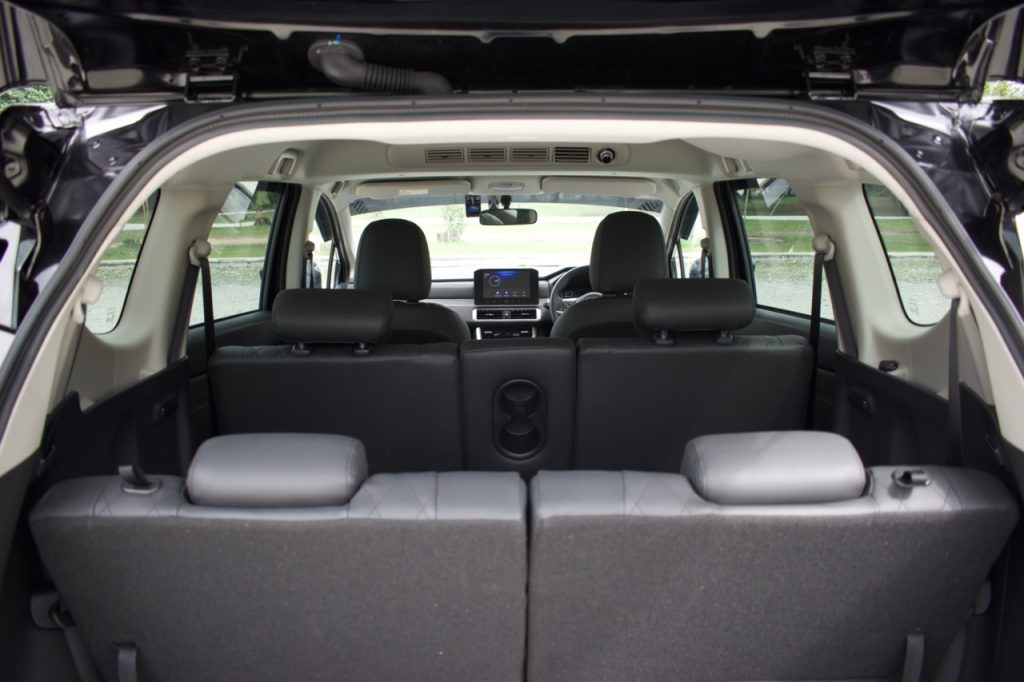
As for how things are like in the second row meanwhile, those who have been in the second row of both cars surprisingly preferred the Xpander over the BYD. Such is because the Mitsubishi somehow manages to offer a bit more legroom in the second row, but more importantly also has more space under its front seats for those seated in the second row to tuck their feet into.
Another plus point on the practicality front to the Xpander too is that the one-touch tumble mechanism for its second row of seats is way easier to operate than the convoluted twin-lever setup in the BYD. It actually also offers a larger aperture for those attempting to access the third row.
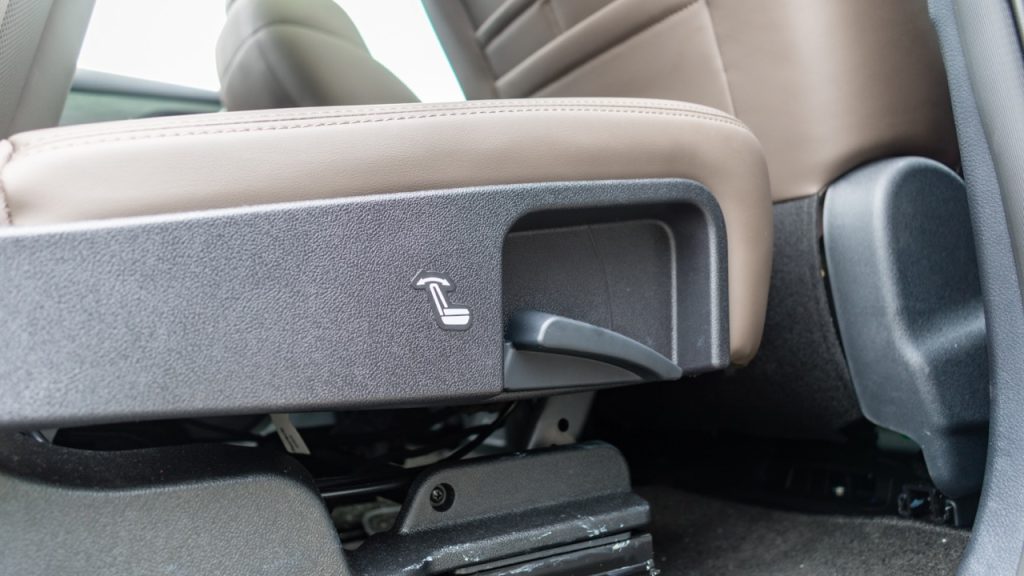
What more is that while both cars offer rear row air-con vents, the general consensus among those who have sat behind in both was for the Xpander’s central roof-mounted vents to be much more effective at the job of circulating cold air in the rear, relative to the M6’s vents that were on the side.
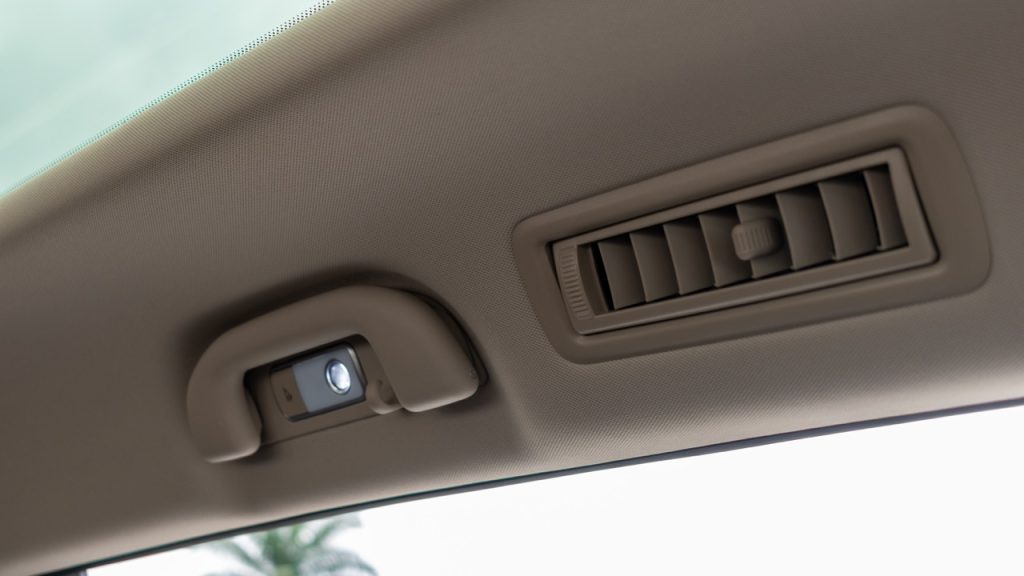
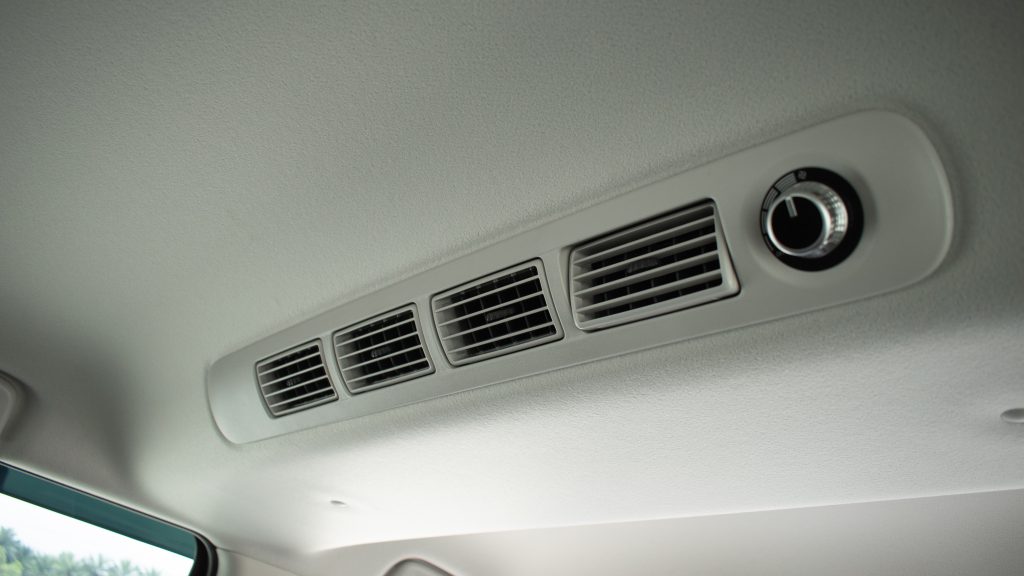
Then again in terms of overall cabin quality, there is unfortunately no denying that despite costing about the same, the BYD absolutely trounces the Xpander in this regard. There is no other word but cheap to describe the interior plastics and leatherette upholstery within the Mitsubishi MPV, while the M6 on the other hand has some nice (faux) wood trim and a padded roof lining to give it a perception of premium-ness.
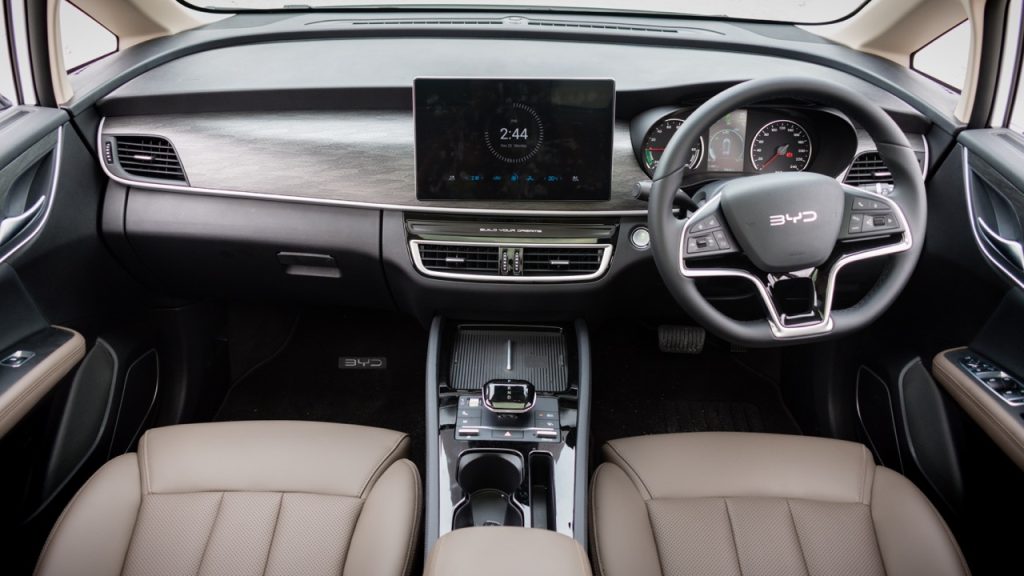
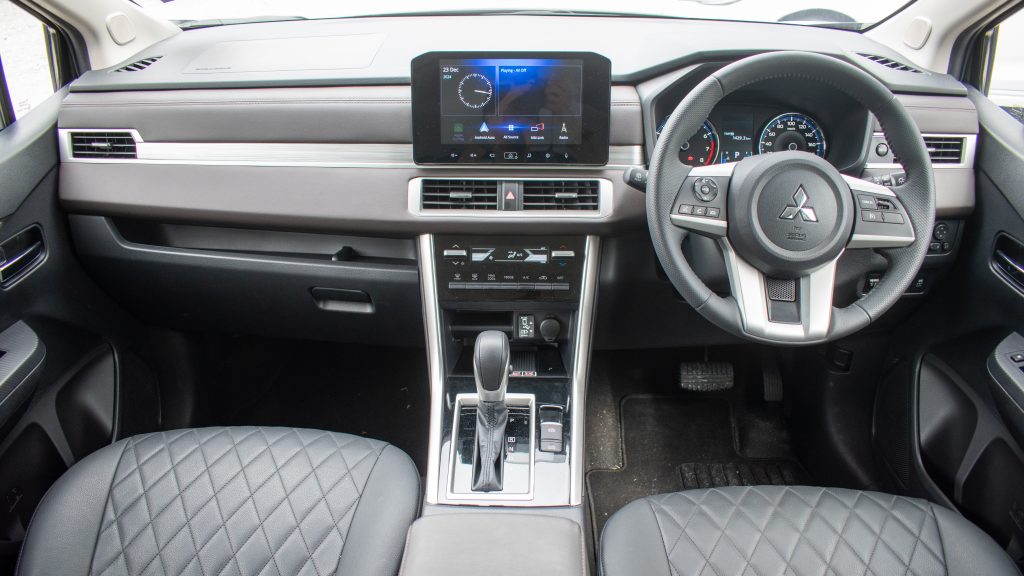
Kit List
The Facts:
Both the BYD M6 Standard and Mitsubishi Xpander Plus are equipped with the following features:
- Keyless entry and push start
- Analogue instrument cluster with colour LCD display (4.2-inch for the Xpander vs 5.0-inch for the M6)
- Central infotainment touchscreen (landscape 9.0-inch for the Xpander vs rotating 12.8-inch for the M6)
- Apple CarPlay and Android Auto smartphone connectivity (wired for the Xpander vs wireless for the M6)
- 6-speaker sound system
- Tilt and telescopic multi-function steering wheel with audio and cruise control buttons
- Automatic climate control with rear air vents
- 360º surround view camera
- 4 USB ports (2 front, 2 in the second row)
Now curiously for a Chinese car here, the base-spec M6 Standard is to not exactly to be trouncing the Xpander Plus on the kit list front. Aside from the EV-specific V2L functionality, among the notable add-ons with the BYD over the Mitsubishi are to be a PM 2.5 cabin filter (without display), an NFC keycard and an in-car karaoke gimmick with an optionally purchasable wireless mic.
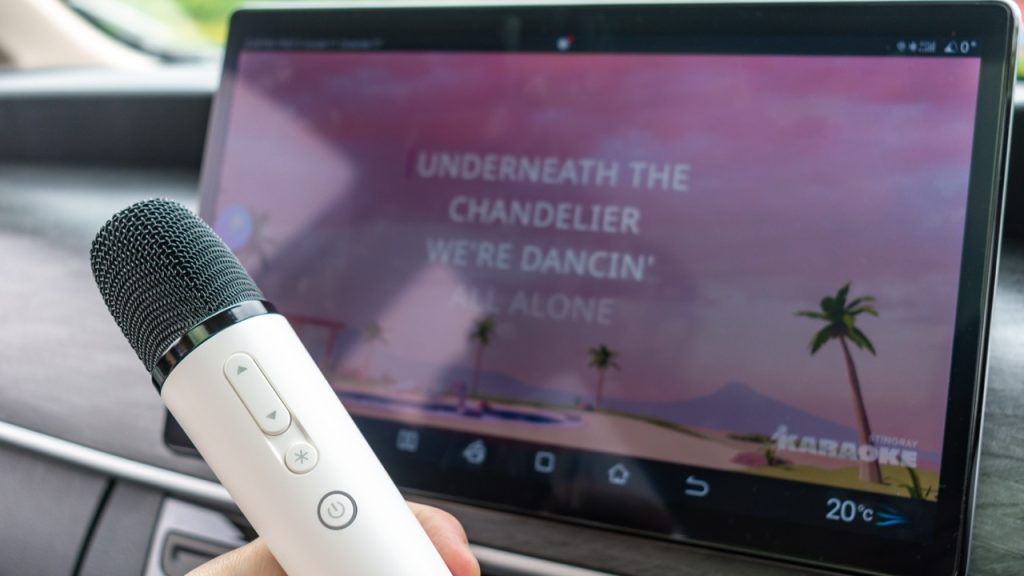
The top-trim Xpander Plus meanwhile fights back against the BYD on the kit front by featuring front and rear dash cams as standard, as well as a wireless charging pad. A wireless charging pad is to only be available on the higher-end M6 Extended, which also adds on a panoramic sunroof, ventilated seats and a powered tailgate with its RM 123,800 asking price.
Also exclusive to the higher-end BYD M6 Extended are a full suite of active driver aids, with the Standard variant only netting the barest minimum of passive safety kit. This lack of any ADAS is unfortunately apparent in the Xpander too, but the Mitsubishi really comes off worse in the safety department by featuring only 2 airbags, instead of the 6 that are found within the BYD.
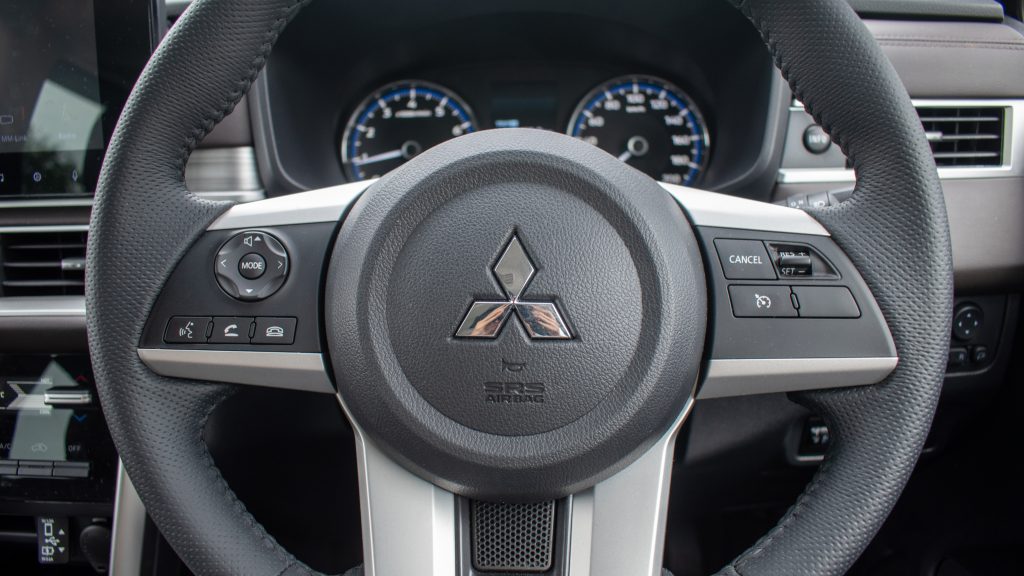
The Automacha Opinion:
When it comes to the kit on board, the lowly airbag count of 2 in the Xpander is really a black mark against the Mitsubishi MPV. Apart from that though, both cars could be thought of as being comparable to each other in this regard.
Having said that, the quality of kit on board the BYD is undoubtably a cut above the Mitsubishi. The central screen for instance is flashier and much more responsive to the touch relative to the rather basic system in the Xpander. While having stated above that it was a gimmick too, the in-car karaoke feature in the M6, from this writer’s personal experience at least, is actually quite fun to have around too.
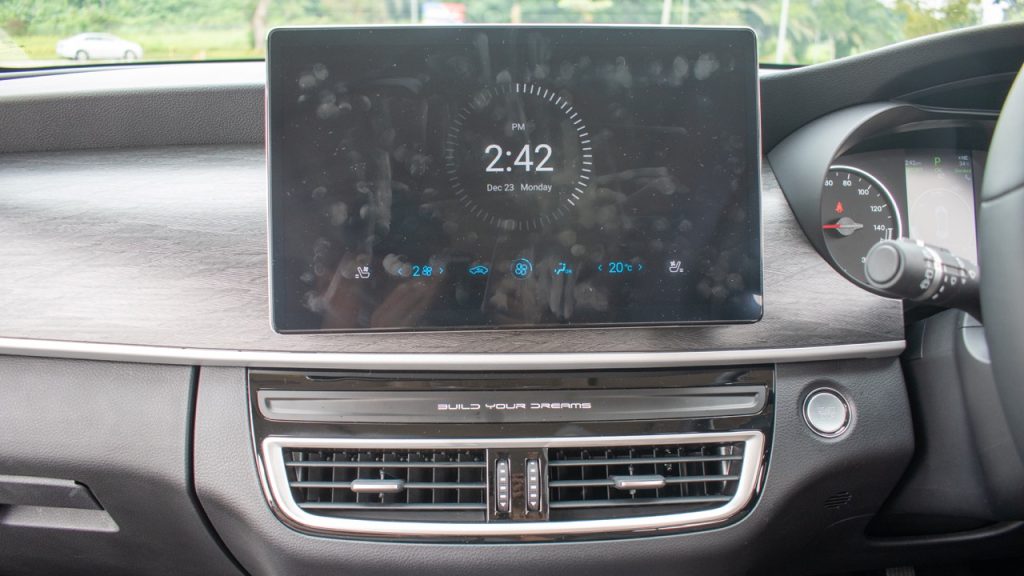
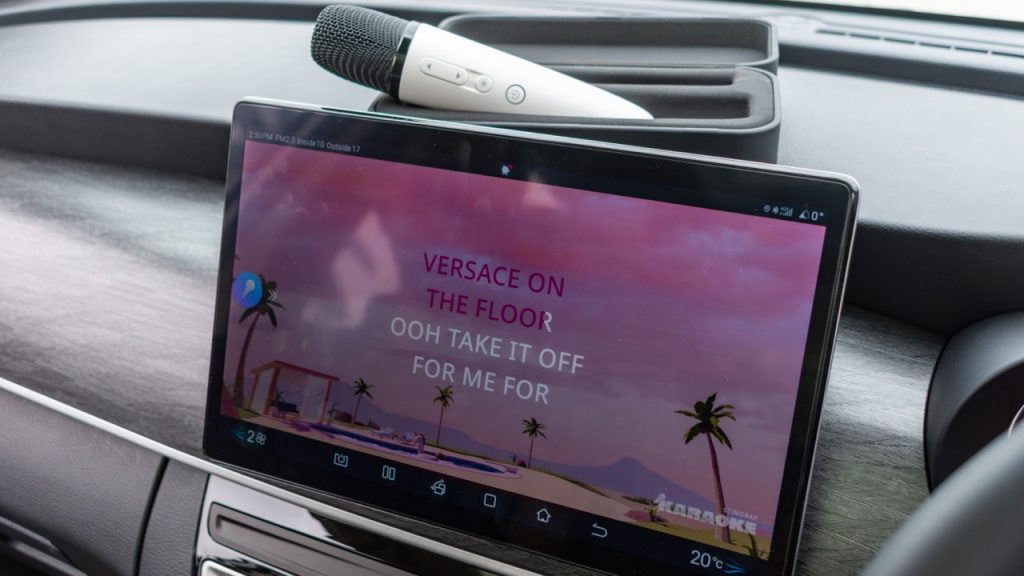
It is nevertheless worth pointing out here that in terms of longer term ownership prospects, upgrading the 9-inch infotainment in the Mitsubishi in future would likely be an easier task down the line, given that it has less tech strings attached to the vehicle’s own systems.
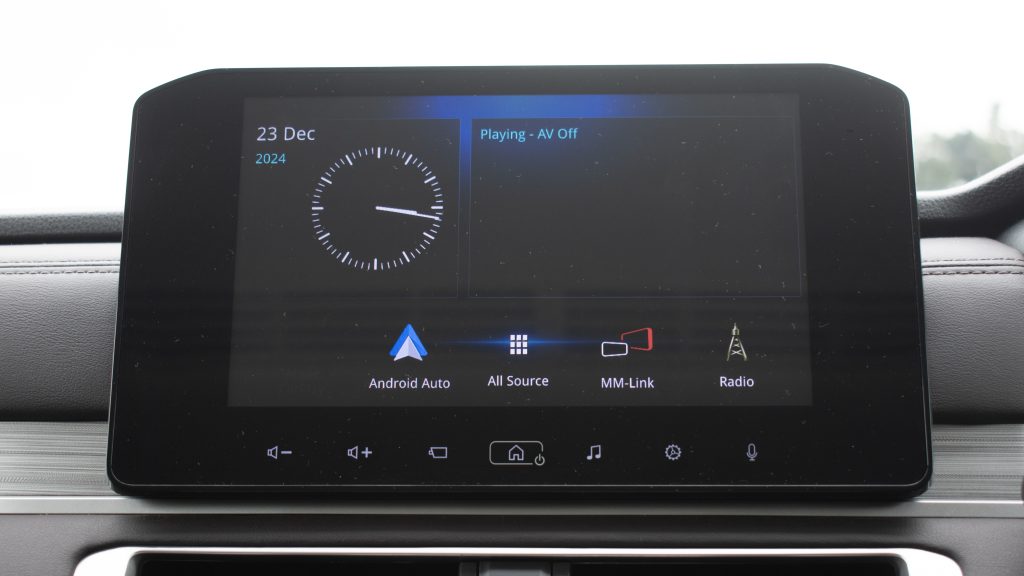
On The Road
The Facts:
Motive power for the purely-petrol Xpander comes courtesy of a 1.5-litre naturally aspirated four-cylinder, which is then paired to a four-speed automatic transmission that sends power to the front wheels. The all-electric BYD M6 in turn features a front-mounted AC permanent magnet synchronous motor, that is fed (in the Standard spec at least) by a 55.4 kWh BYD Blade LFP battery.
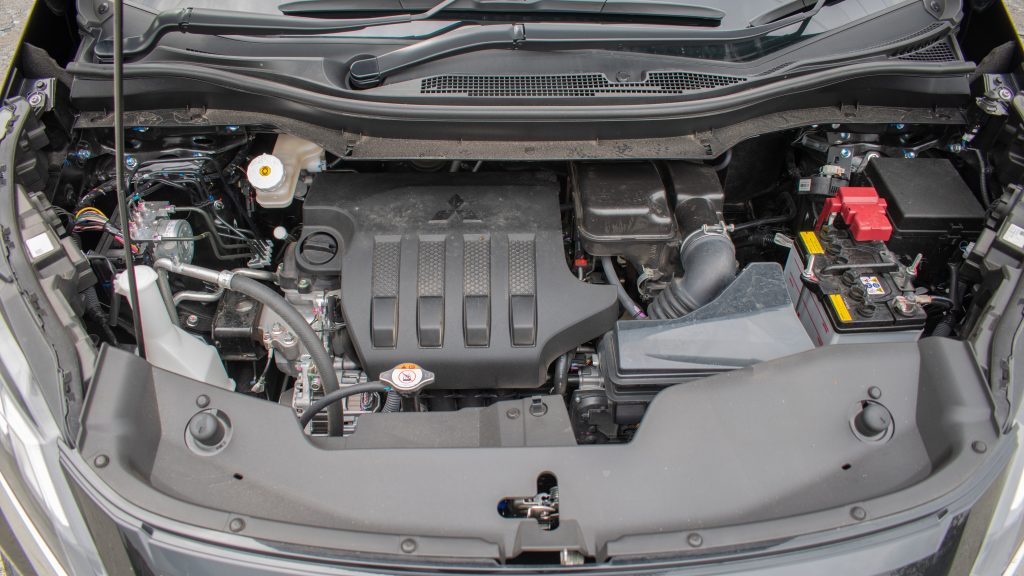
Mitsubishi quotes for the Xpander to output 105 PS and 141 Nm of torque, while the all-electric M6 manages to muster a healthier 163 PS and 310 Nm of torque.
While the tri-diamond marque does not officially quote a century sprint time and top speed for its MPV, external sources claim for it to manage the run to 100 km/h in 13.2 seconds, before topping out at 170 km/h. BYD on the other hand officially quotes a 0-100 km/h time of 10.1 seconds for the M6 and a V-max of 180 km/h, as well as an NEDC-rated range of 420 km on a single full charge.
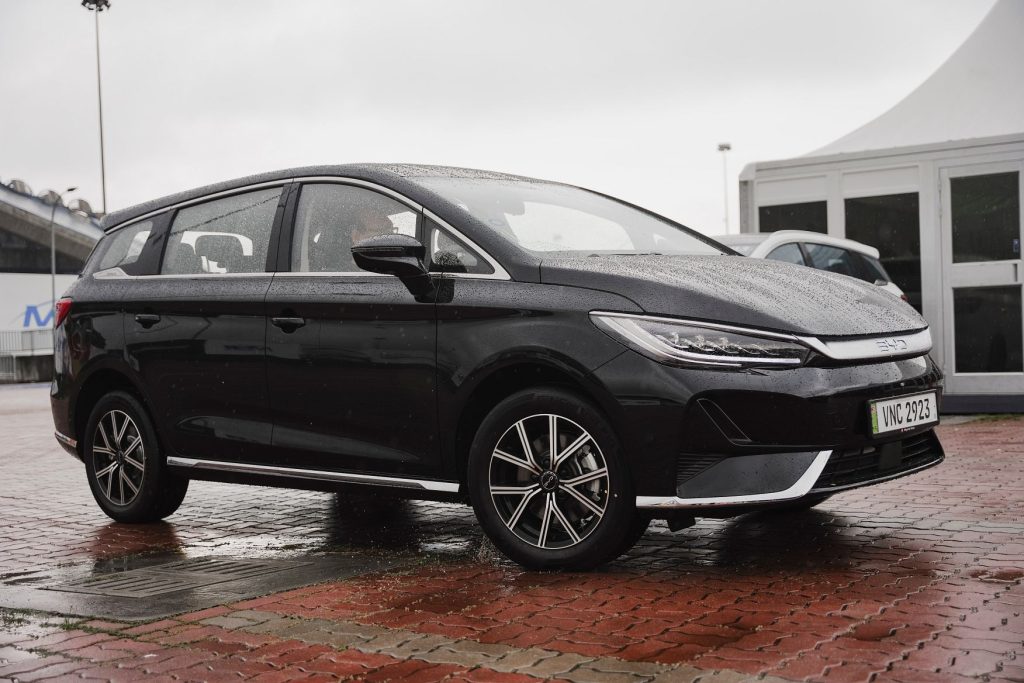
Elsewhere under the skin meanwhile, both MPVs feature McPherson struts up front. The Xpander however comes with a torsion beam rear suspension setup, versus a multi-link setup in the BYD. The M6 is also the only car of the two to feature disk brakes all round, as drums to be found on the rear of the Mitsubishi. Both cars nevertheless feature electronic parking brakes with Auto Hold.
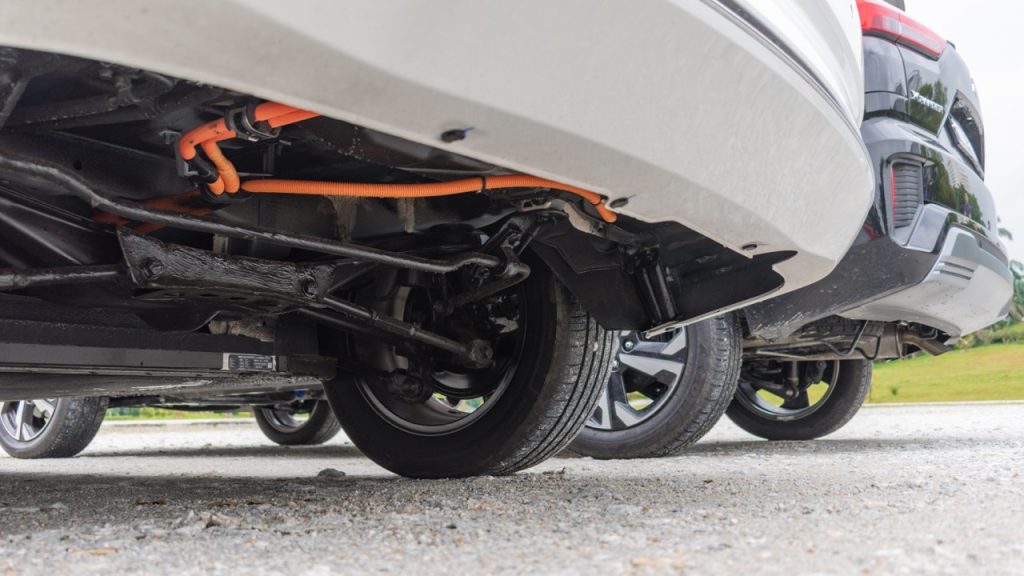
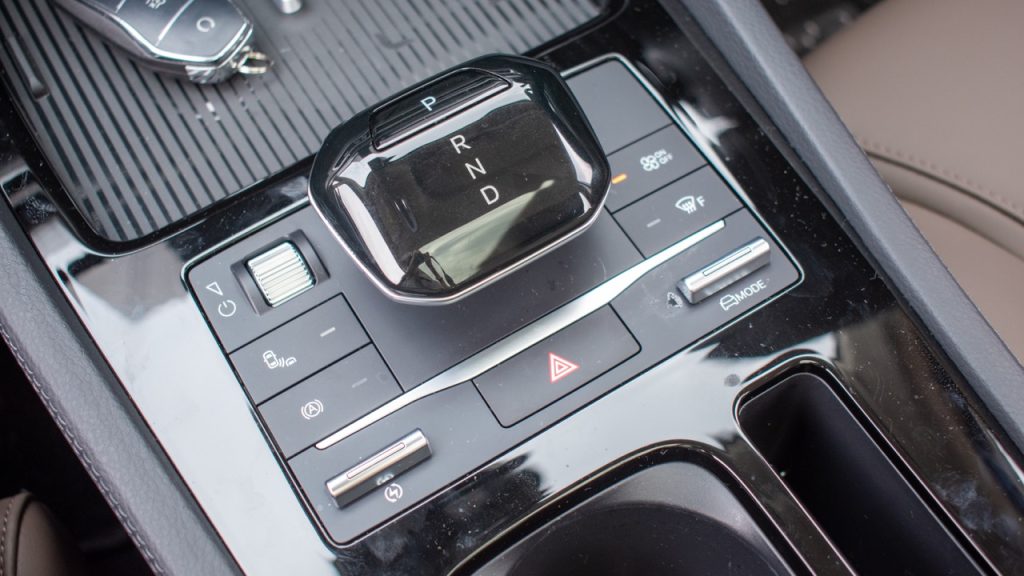
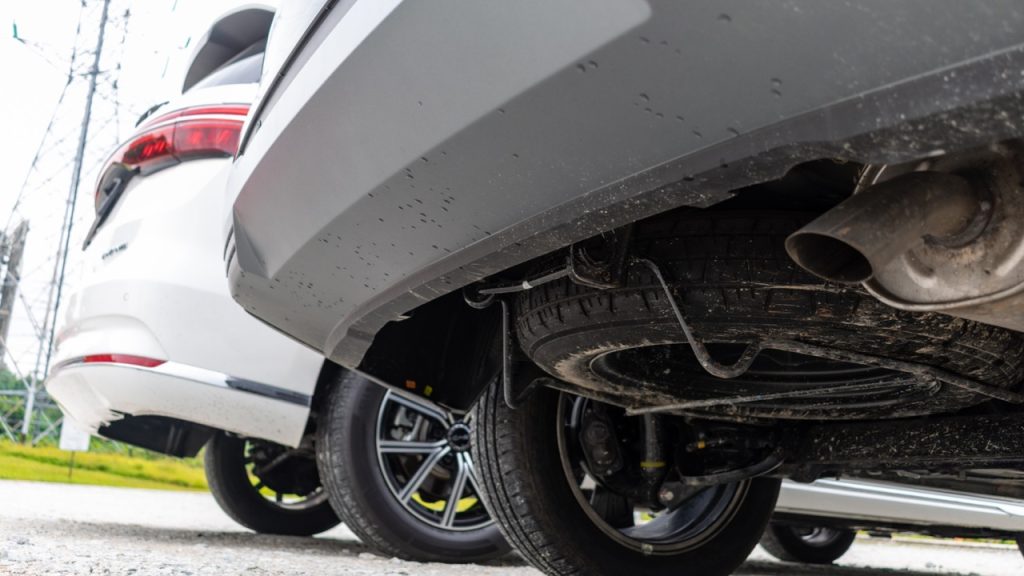
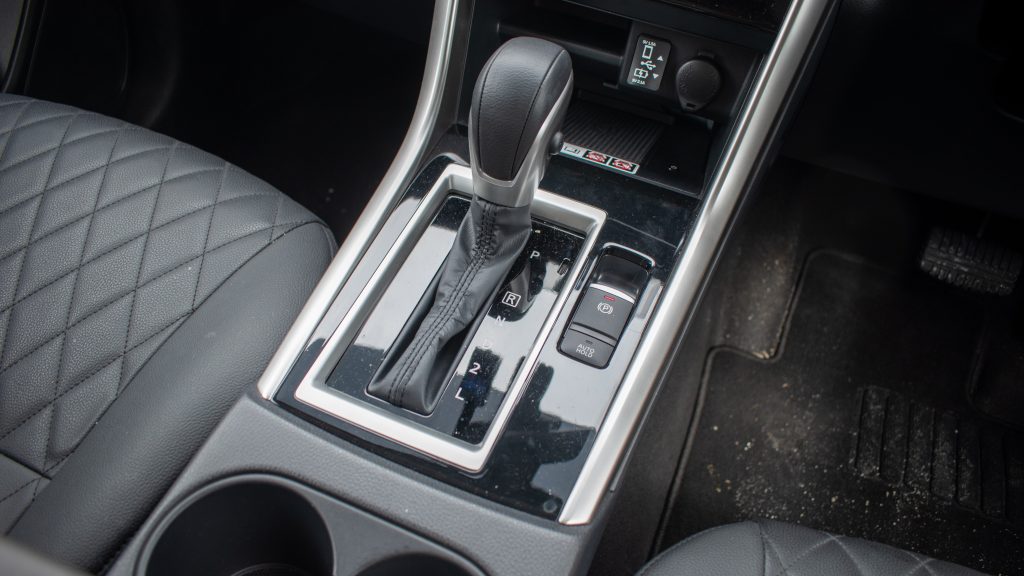
The Xpander is claimed to have a rather small turning radius of just 5.2 metres, whereas the BYD M6 quotes a minimum of 5.8 metres.
The Automacha Opinion:
Now being completely frank here, comparing an EV against an ICE with regards to how both are on the road is really not a fair comparison. Such is as the all-electric alternative will always naturally be the more refined and comfortable car of the two, due to the lack of vibration and noise that is felt when there is an engine up front.
And this is especially true in this regard, with the Xpander’s four-cylinder not exactly being the most refined out there. It also does not have the best NVH suppression within too, which further provides the unwelcome opportunity to hear (and feel through the steering wheel) the engine labouring away as it moves this MPV around.
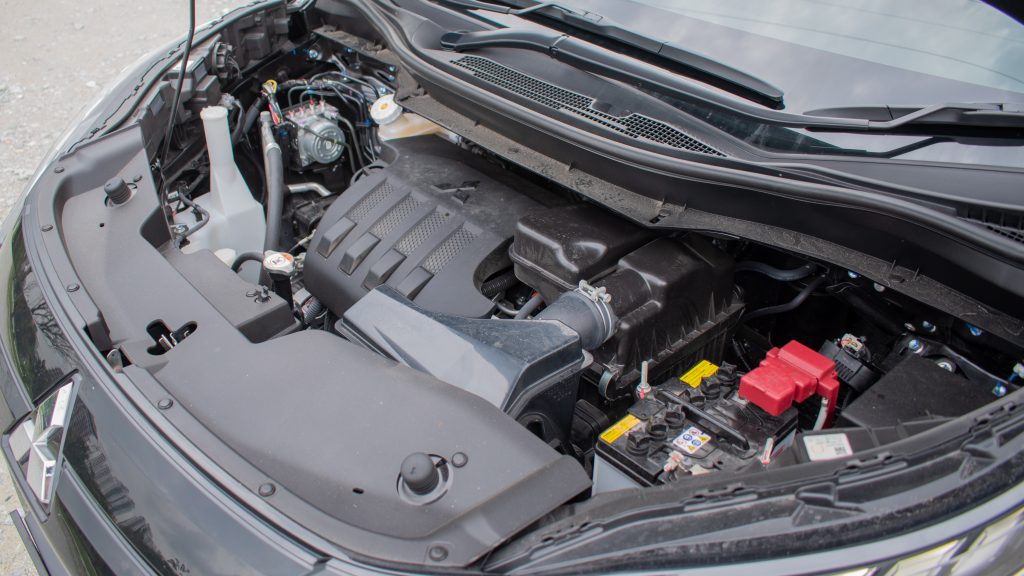
What more is that while the spec sheet already shows that the BYD is much quicker than the Xpander, the century sprint figures does not show how the M6 (with its electric motor providing instant torque from the get go) just leaves the Mitsubishi in the dust when getting off the line. And really, the refinement of the BYD and the effortlessness in getting the M6 to move relative to the Xpander sees for it to absolutely cream the Mitsubishi on how easy it is to drive on a daily basis.
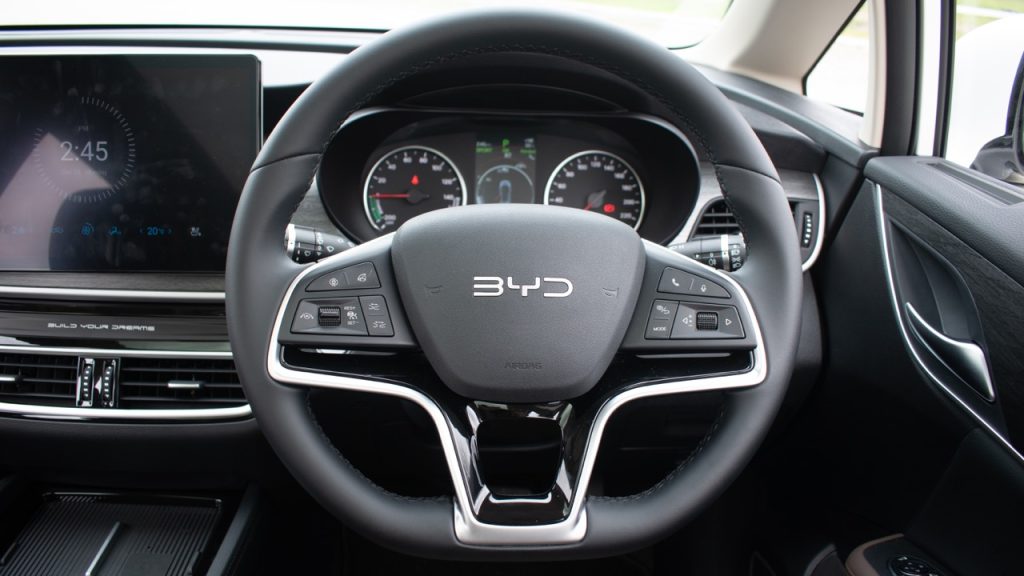
It is worth noting here however that the driving experience with M6 here was based off the higher-end Extended variant, which incidentally packs a bit more power over the Standard spec from having a larger battery pack. It therefore remains to be seen how the M6 Standard fares, though the inherent instant torque that comes with an electric motor should still see this less powerful variant be more eager to get up and go than the petrol-powered Xpander.
Also, in terms of how both cars are like to ride in while on the move, the common consensus was for the M6 to be the much more comfortable choice than the Xpander. Those who had spent time in the back seats of both commented that the higher-riding Mitsubishi was the more wallowy car of the two, while the BYD felt like the more solid and stable alternative, especially when on the highway.
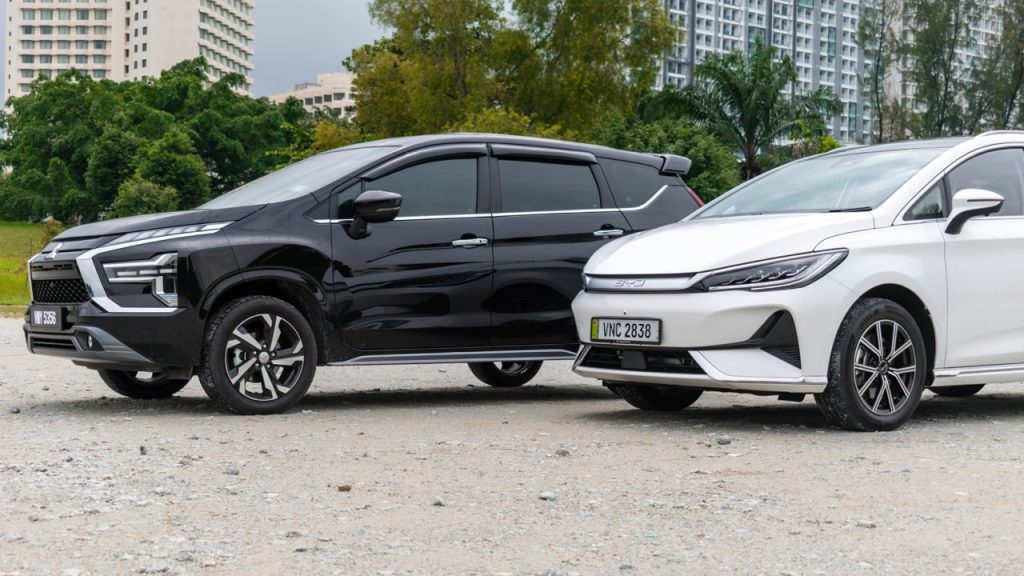
Long Term Living
The Facts:
Looking here at maintenance costs first for both cars and using the official servicing plans provided by the automaker, the total cost for maintaining a Mitsubishi Xpander for 120,000 km totals up to be RM 5467.85. BYD on the other hand offers two maintenance packages to cover the M6 in Malaysia for 6 years/120,000 km at time of writing, with these being the Standard that costs RM 3,888, and the Plus at an exorbitant RM 12,888.
The Standard maintenance package for the M6 is nevertheless the more apt comparison with what is offered in Xpander’s official service plan, as the Plus adds on coverage for brake replacements and even the changing of the remote control battery.

In terms of daily running costs meanwhile, brimming the 45-litre tank on the Xpander at the current subsidised RON 95 rate of RM 2.10 will cost RM 94.50. And if going by Mitsubishi’s claims of it being capable of doing 8.9 litres/100 km, it should be capable of achieving nearly 500 km on a full tank. This hence works out for it to cost about RM 0.19 in petrol costs per km for the tri-diamond MPV.
As for the BYD on the other hand, calculating electricity costs per km is slightly more difficult, due to the vastly different EV charging rates between home charging, public AC charging and public DC charging. Using a very simplistic back-of-envelope calculation with the general figure of a 420 km NEDC-claimed range on a single charge from its 55.4 kWh battery, and the lowest home electricity tariff of RM 0.218 per kWh as well as a top end DC ultra-fast charging rate of RM 1.60 per kWh, the range of electricity costs to run an M6 per km works out to be between RM 0.03 to RM 0.21.
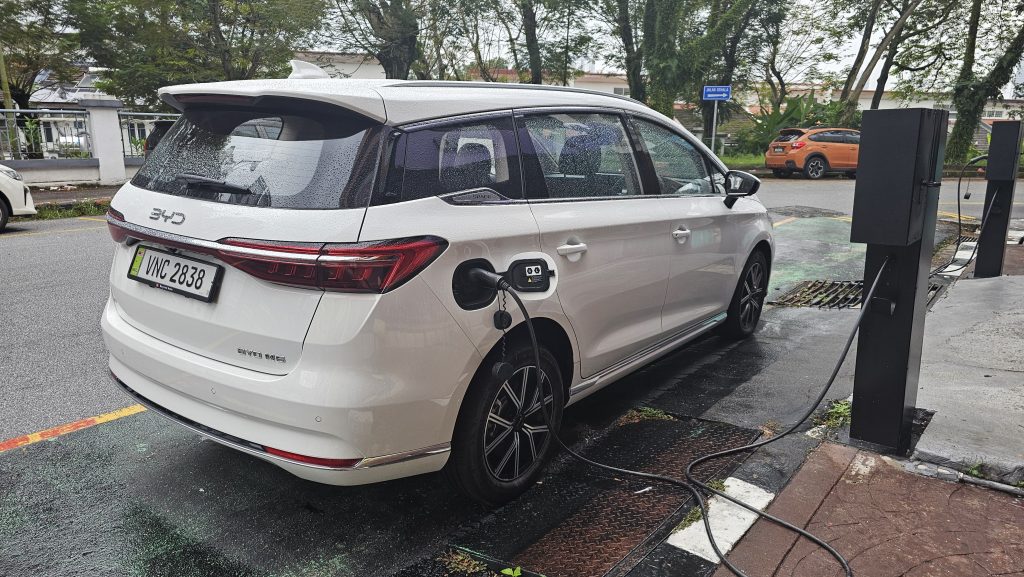
The Automacha Opinion:
In comparing maintenance costs, the RM 3,888 Standard package offered on the M6 is of course cheaper than what it would cost to service an Xpander over the same period of time/distance. It has to be said though that the sub-RM 2,000 delta between the two cars isn’t exactly what people think of when they say that the low-maintenance EVs are infinitely cheaper to run than their ICE equivalents, especially if one were to factor in that EV-specific tyres are to be a decent chunk more expensive than the normal stuff.
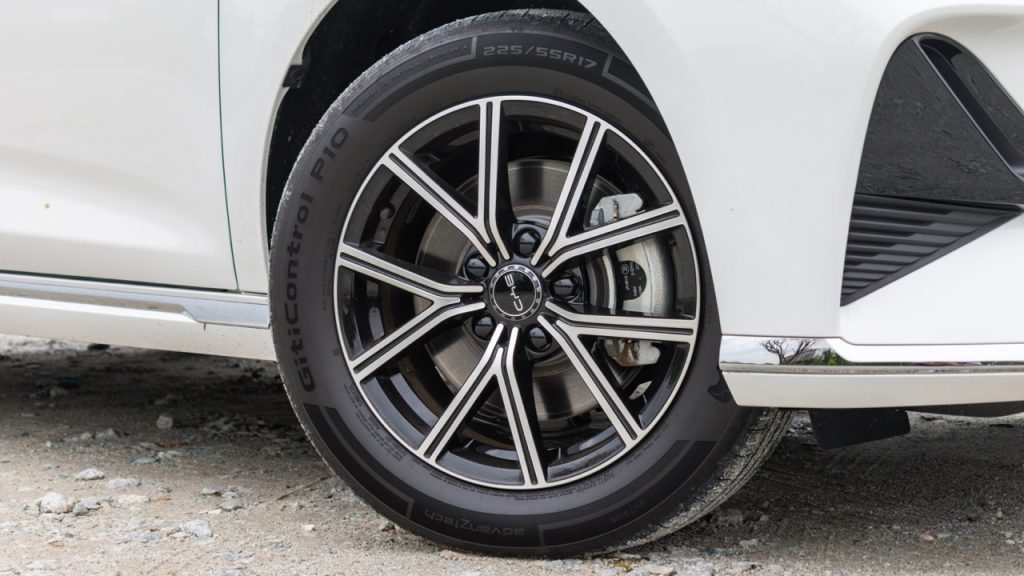
On to the discussion on charging/refuelling costs meanwhile, the calculated figures above that show how the M6 could potentially be more costly to charge up when using a DC supply than refuelling the Xpander emphasises once again that EV ownership is only really ever a fiscally-prudent idea when there is the ability to charge it up at home from a domestic supply, which unfortunately is a luxury that not everyone has access to.
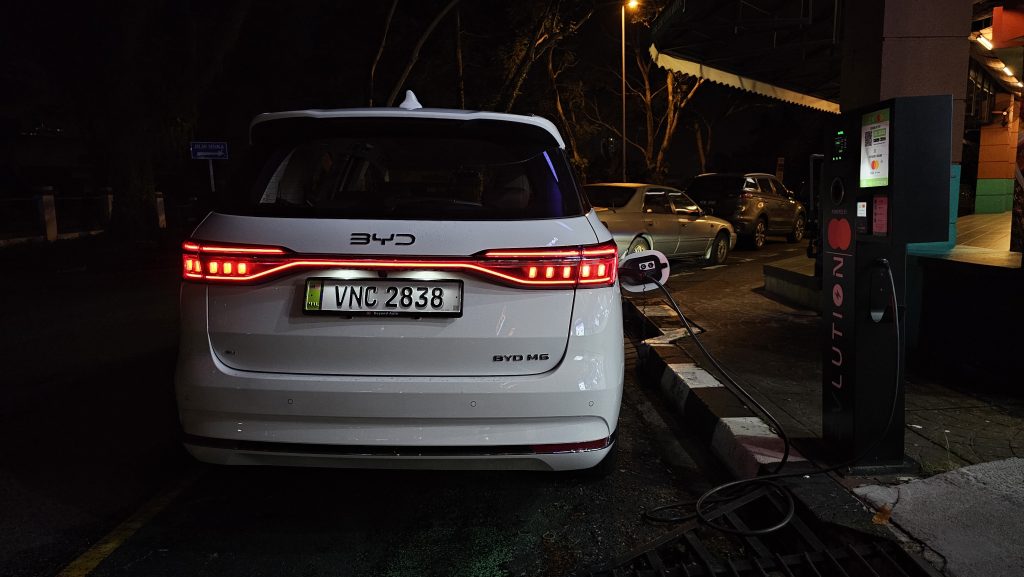
What more is that while the BYD claims that its M6 has more than enough range for the weekly commute of most Malaysians, there is (to this writer at least) still that imaginary tether with any EV, whereby any journey will require forward planning to determine whether there is sufficient charge in the battery to make it. And this is before even getting into the real pain of having to deal with the public EV charging network in Malaysia…
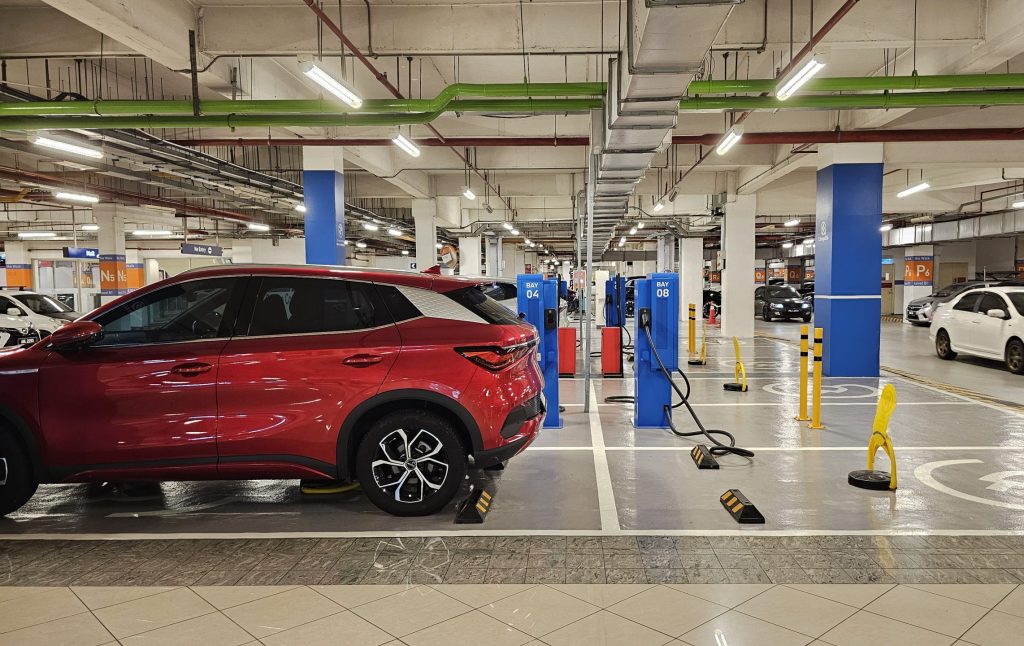
As for actually living with the Xpander on the other hand, there really needn’t be a second thought when one decides to just get in it and go anywhere the family wants. And when the fuel warning light pops up, it is just to be a simple 2 minute splash and dash. Moreover, going by its pre-facelift predecessor at least, the worst calamity to possibly befall what has been reputed as a dead-nuts reliable Mitsubishi MPV is a dead 12 V battery!
One final thing that is worth highlighting here too on the topic of long term living with both these MPVs is the matter of depreciation. The pre-facelift Xpander seems to be following the average depreciation curve, with earliest 2020 examples currently selling for around the RM 60,000 mark. There is no data yet on the M6, but at least going by how steep the value drop-off is on slightly used Dolphins and Atto 3s, the all-electric BYD MPV might just be the more expensive people mover to own at the end of the day.
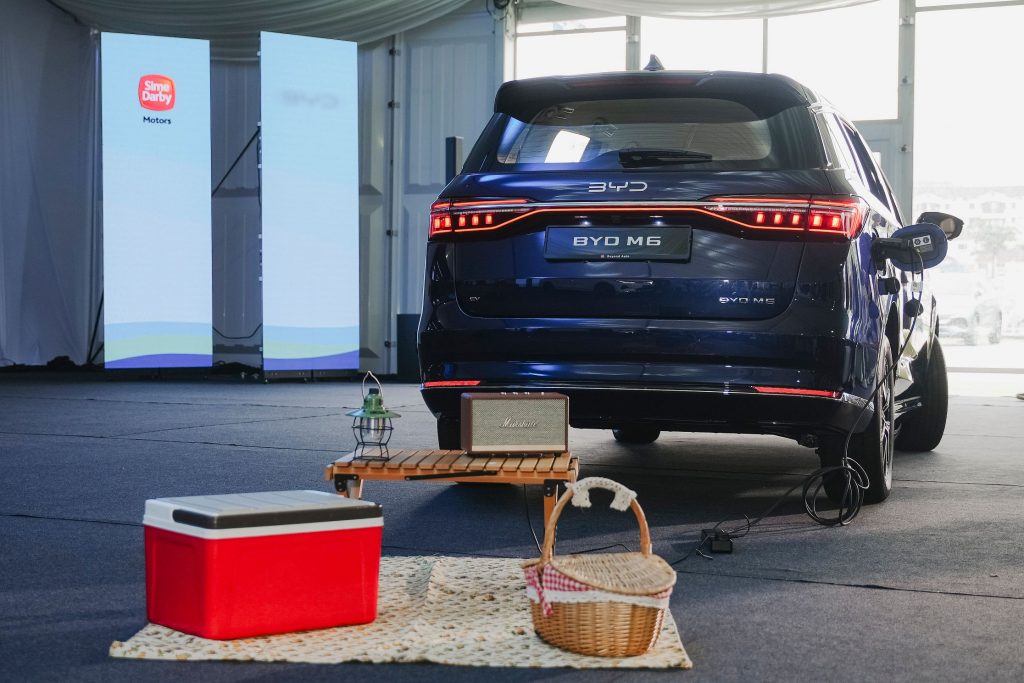
Final Thoughts
The Automacha Opinion:
Having already wrote way too many words for what was supposedly a simple comparison report, it would therefore do to keep the final thoughts here rather brief. And for the short and shocking conclusion here, it has to be said that the Mitsubishi Xpander Plus makes one feel short-changed after getting in from the BYD M6.

Now, there is really no getting away from the fact that the BYD is really a step above in quality and refinement over the Xpander. It is just the much nicer car to sit in and drive, and it being the larger and more spritely car to drive just further adding to its appeal.
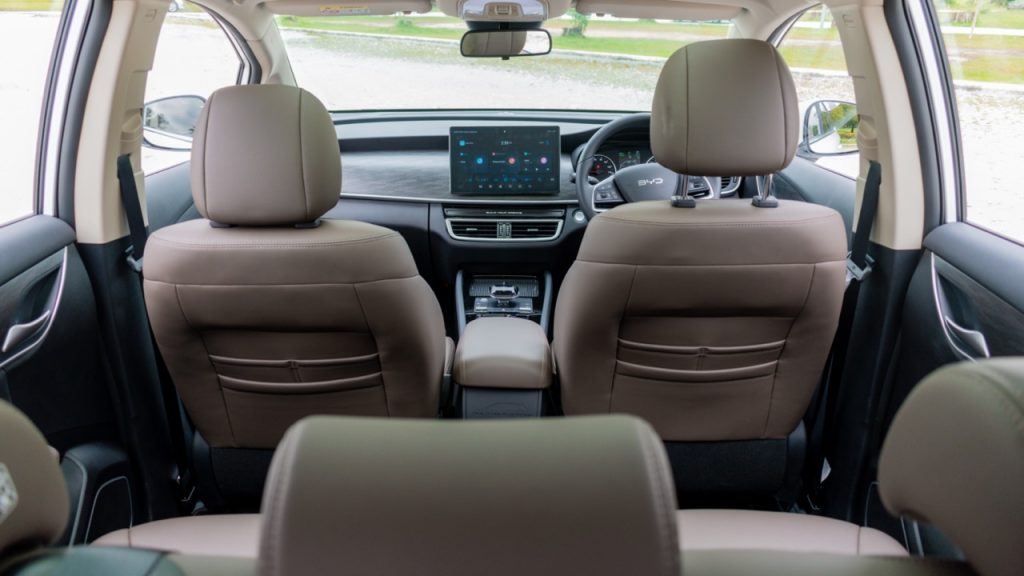
Though before the Xpander fans write in to complain about any possible bias, this conclusion should really not come as a surprise anyway. Such is as without the current EV tax breaks, the M6 will be in a price bracket that is way above that of the Mitsubishi.
What more is that while the Xpander may not exactly be covering itself in glory here against the M6, there are actually still some good qualities going for it. Those who are to frequently be using the third row of seats will have a much easier time with the Mitsubishi, and those who don’t have the luxury of charging up their car at home may potentially have a cheaper and less stressful time living with it too.
